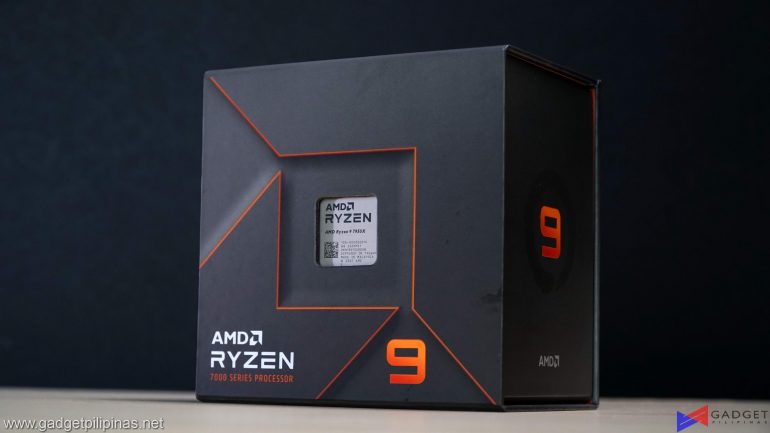AMD ushers in a new era of gaming with the release of its latest AMD Ryzen 7000 series processors under the Zen 4 architecture. The Zen 4 core is powered by TSMC’s 5nm process promising an instructions-per-clock uplift of 13% compared to the Ryzen 5000 series. The Ryzen 7000 series comes with a lot of firsts for the brand such as a new AM5 LGA socket, PCIE Gen 5, and DDR5 memory support. Bearing the flag of the new 7000 series is the AMD Ryzen 9 7950X 16-core, 32-thread CPU which is what we’ll take a look at in this review.
AMD Zen 4 Overview
The new Ryzen 7000 series performance gains and improvements over the previous generation is greatly attributed to AMD addressing design goals for the Zen 4 architecture namely performance, latency, and efficiency. AMD targeted double-digit IPC and frequency improvements for the Zen 4 core performance while reducing average latency and providing a larger L2 cache. The new 5nm process and other improvements allow the Zen 4 cores to be power efficient with only a rated TDP of 170W on its flagship, AMD Ryzen 9 7950X processor.
AMD Zen 4 Core Architecture
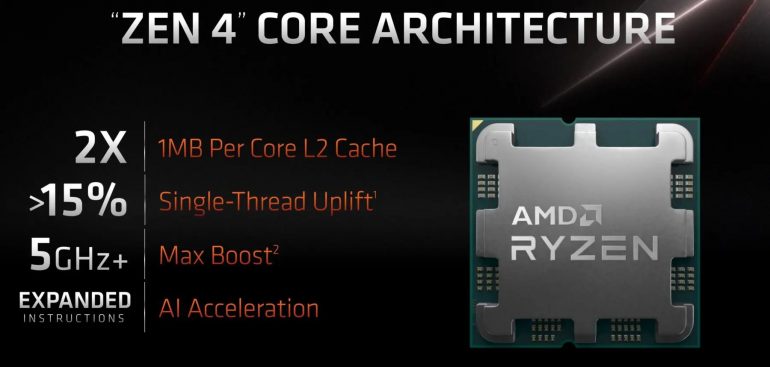
In order to achieve the 13% IPC core uplift of the Zen 4 Cores, AMD optimized the architecture with tweaks to the L2 cache, execution engine, branch prediction, load/store, and front end. Zen 4 also offer a higher Max frequency at a peak of 5.7Ghz compared to its previous generation and even Intel’s 12th Gen 12900K at 5.2Ghz.
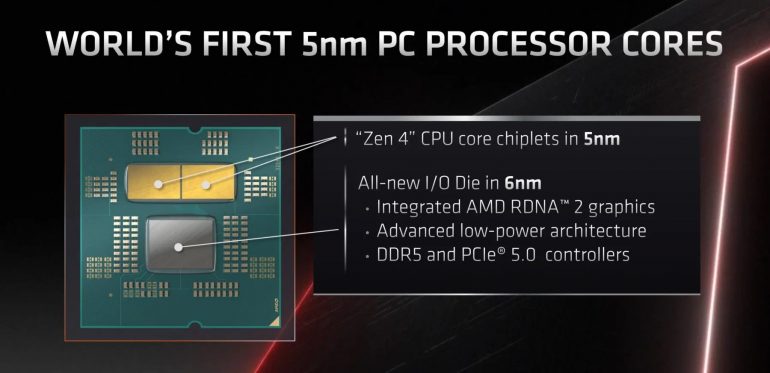
Like the previous Zen 3+ core, Zen 4 has two main chiplets that houses the CPU cores and therefore can be configured depending on the model to activate a certain number of cores. Apart from the core chiplets, there’s a new 6nm I/O die which serves as an interconnect houses the RDNA iGPU, DDR5, and PCI-E Gen 5 controllers. AMD also doubled the L2 cache size of the Zen 4 CPUs and adds expanded instructions such as AVX-512 for AI acceleration and deep-leraning workloads.
AM5 Socket & Motherboards

AM4 comes to an end after more than 5 years as the new Ryzen 7000 series transitions from the PGA socket to an LGA 1718 AM5 socket. According to AMD, the platform transition improved the pin density to 1718 allowing for more socket power up to 230 watts, more bandwidth for PCI-E Gen 5 and DDR5 – not to mention it reduces the chances of breaking your CPU by installation. Per AMD Computex 2022 Keynote, AMD plans to support Socket AM5 at least until 2025.

AMD made a few changes with its motherboard chipset lineup for the AM5 Platform. AMD initially announced the X670E, X670, and B650 chipsets last Computex 2022, however, they later on added the B650E chipset which was announced at its recent together we advance_PCs event. All motherboard chipset tiers will support PCI-E Gen 5 storage for its NVMe slots while the Extreme motherboards will also support PCI-E Gen 5 on the x16 slots with the X670E having all Gen 5 PCI-E slots. X670E and X670 motherboards will be available alongside the Ryzen 7000 CPU launch while the B650E and B650 motherboards will be available in October.
AMD EXPO DDR5
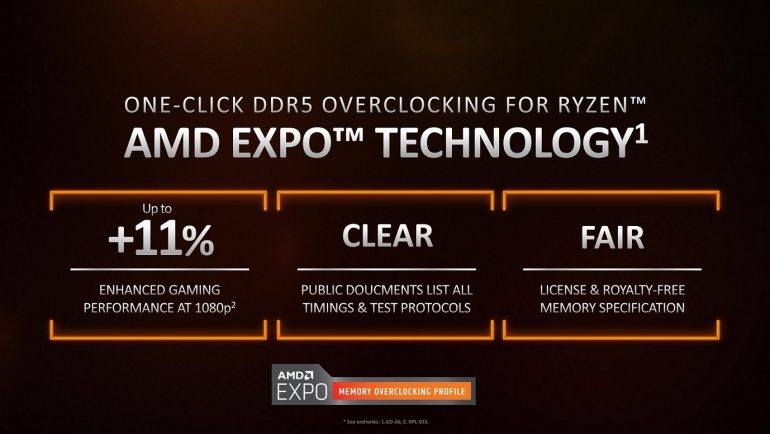
Unlike Intel which decided to preserve DDR4 memory on its latest 12th Generation Core processors, AMD decided to fully transition to DDR5 memory on its AM5 platform. While the overall platform cost will be high due to the DDR5 kits, AMD introduced AMD EXPO to somehow relieve the burden of consumers. AMD EXPO is simply the brand’s answer to Intel’s XMP profile. While XMP can still be used on the new Ryzen 7000 series, EXPO certification guarantees compatibility with Ryzen 7000 CPUs.AMD requires no license and royalty fee for EXPO-certified memory kits so we should see no additional cost or rather cheaper offerings for EXPO kits compared to XMP kits.
AMD Ryzen 7000 Series Specs
| CPU | Ryzen 9 7950X | Ryzen 9 7900X | Ryzen 7 7700X | Ryzen 5 7600X | Ryzen 9 5950X | Ryzen 9 5900X | Ryzen 7 5800X | Intel Core i9 12900K |
| Cores/threads | 16/32 | 12/24 | 8/16 | 6/12 | 16/32 | 12/24 | 8/16 | 8P+8E/24 |
| Base clock (GHz) | 4.5 | 4.5 | 4.7 | 3.7 | 3.4 | 3.7 | 3.8 | 3.2 |
| Boost clock (GHz) | 5.7 | 5.4 | 5.4 | 4.6 | 4.9 | 4.8 | 4.7 | 5.2 |
| L2 + L3 Cache | 80MB | 40MB | 40MB | 35MB | 72MB | 70MB | 36MB | 30MB |
| TDP | 170W | 105W | 105W | 65W | 105W | 105W | 105W | 125W |
| USD SRP | $699 | $549 | $399 | $299 | $799 | $549 | $449 | $739 |
| PH SRP | ₱ 46,150 | ₱ 36,250 | ₱ 26,350 | ₱ 19,750 | ₱ 44,900 | ₱ 30,250 | ₱ 24,800 | ₱ 36,000 |
AMD’s CPU launch lineup pretty much remains the same as the previous generation except for the Ryzen 7 7 7700X instead of the 7800X like the Ryzen 7 5800X on launch. The 800 model could be reserved for a refreshed line down the road which may feature AMD’s 3D V-cache technology similar to the Ryzen 7 5800X3D. Specs-wise, there’s a significant increase in the Ryzen 7000’s cache size apart from the higher clock speeds. Pricing has remained the same although the Ryzen 9 7950X is $100 cheaper compared to the Ryzen 9 5950X’s launch price of $799 US.
AMD Ryzen 9 7950X
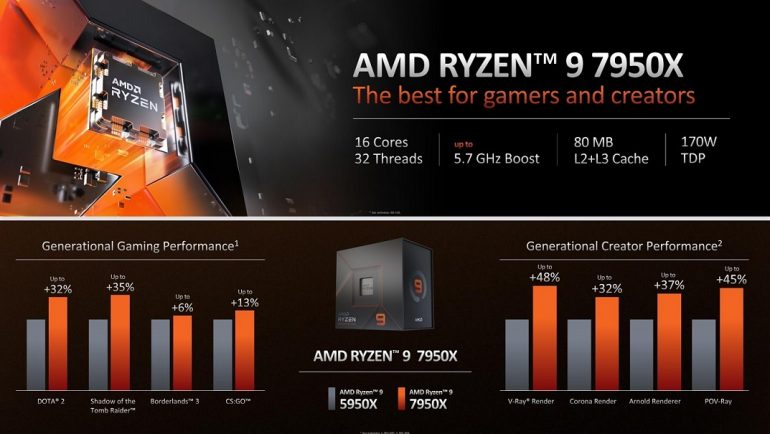
The AMD Ryzen 9 7950X 16-core/32-thread CPU is the flagship model of the Ryzen 7000 series replacing the almost two-year-old Ryzen 9 5950X. It features double the L2 cache per core of its predecessor for a total of 80MB L2+L3 cache and a higher boost clock of up to 5.7Ghz while still maintaining the 170W TDP. While we don’t have the 5950X available for testing we’ll be pitting the Ryzen 9 7950X against Intel’s current flagship, the Intel Core i9 12900K processor.
Benchmark Setup and Methodology
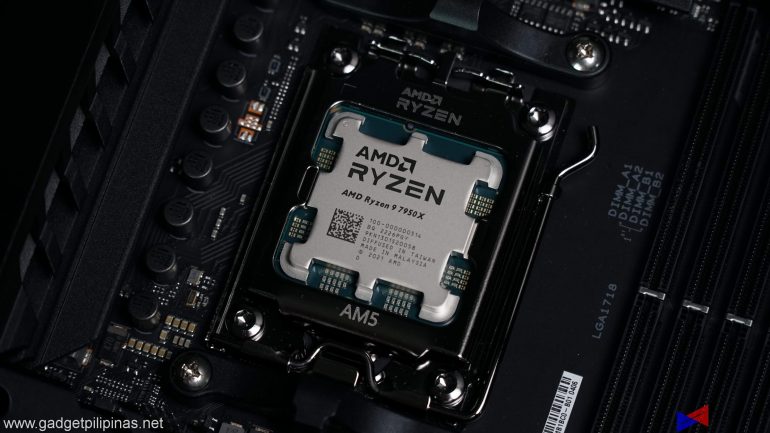
Gadget Pilipinas’ testing philosophy is to provide detail-oriented results as accurately as possible so that our readers can replicate our tests given that these conditions are met. Different benchmarking apps and sequences are used depending on the component or device being tested.
AMD Ryzen 9 7950X Testbench Specs
| CPU | AMD Ryzen 9 7950X | AMD Ryzen 7 7700X | Intel Core i9 12900K |
| COOLER | ASUS ROG RYUJIN II 360mm V2 – Noctua NT-H2 Thermal Paste | ||
| MOTHERBOARD | ASUS ROG Crosshair X670E Hero | ASUS ROG Strix Z690-E Gaming | |
| MEMORY | GSkill Trident Z5 Neo 32GB(2x16GB) 6000 Mhz DDR5 | ||
| GPU | Inno3D RTX 3080 Ti iChill X4 | 516.94 driver | ||
| STORAGE | Kingston KC3000 1TB PCI-E Gen 4 SSD | ||
| POWERSUPPLY | ROG Thor 1000W Platinum II PSU | ||
| OPERATING SYSTEM | Windows 11 Pro Build 22000 | ||
| DISPLAY | Lenovo Legion Y27Q Gaming Monitor |
We use CapFrameX 1.7.0 Beta as our primary FPS capture and analysis tool for all our gaming benchmarks. The latest build version of Windows 11 Pro, and WHQL-certified drivers are used for our benchmarks. Readings such as temperatures and power draw are recorded using HWINFO64, and other relevant software for cross-checking.
AMD Ryzen 9 7950X Synthetic Benchmarks
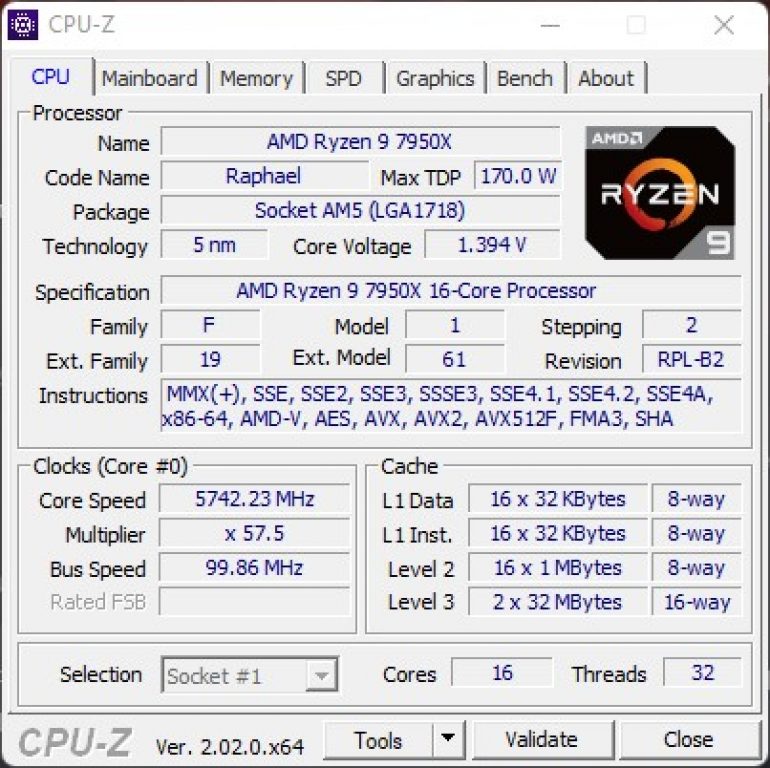
SuperPI 32M
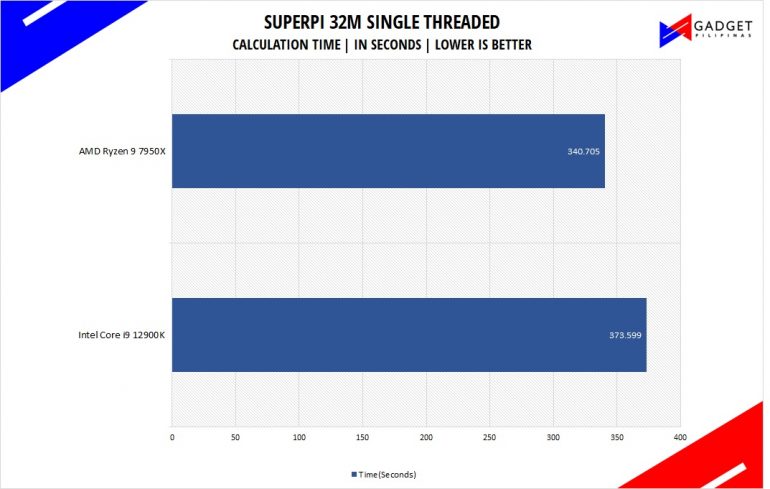
SuperPI is a single-threaded benchmark application that lets the CPU calculate Pi(π) to the nth digit. In this benchmark, we selected the Pi calculation to 32M, the highest available in the software
wPrime 1024M
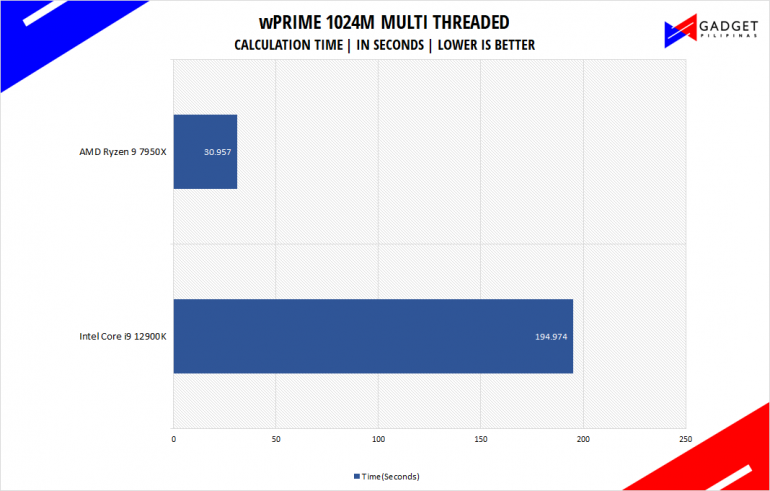
wPrime is a benchmark tool similar to SuperPI, but the former takes on finding prime numbers using Newton’s Method. The benchmark is set to calculate 1024 million prime numbers, and the performance is measured according to calculation time.
AIDA64 Memory Benchmark
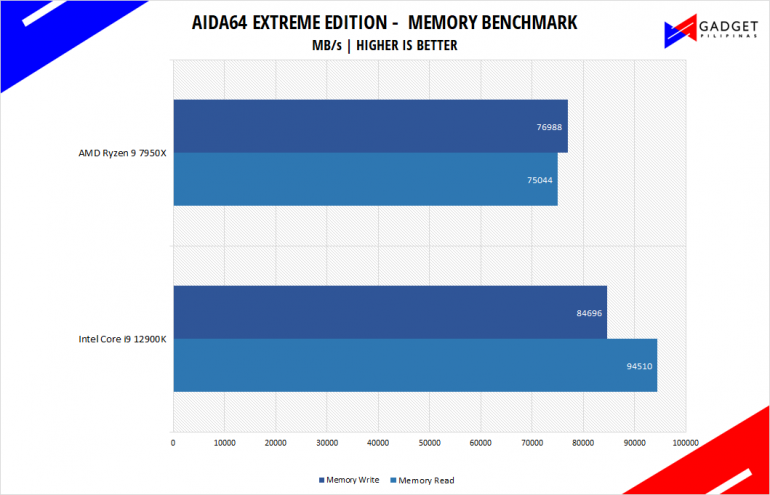
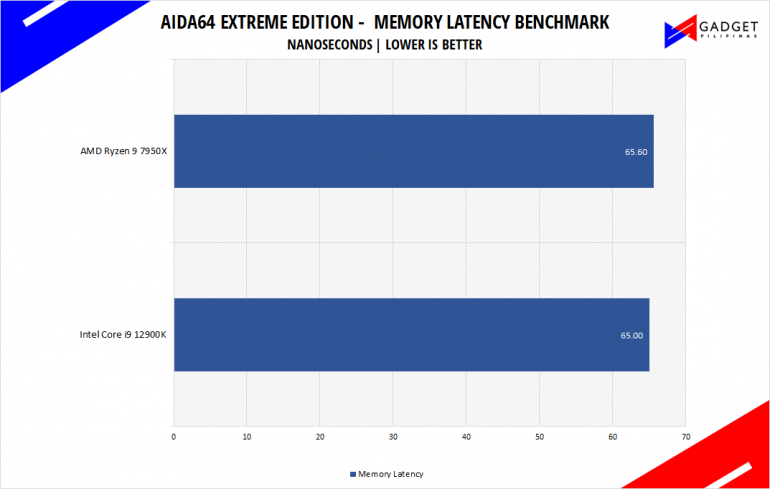
AIDA64 is a very popular and powerful monitoring tool, as well as a benchmarking application. AIDA64 is commonly used to stress test CPUs, especially testing if an overclock is stable. We used AIDA64’s Memory Benchmark to measure the data transfer bandwidth of the system memory.
GeekBench 5.4.5
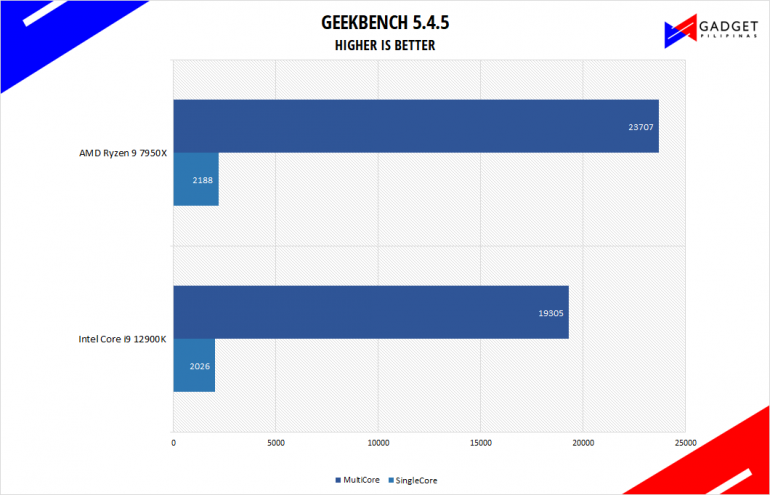
Geekbench is a multi-platform benchmark used to gauge CPU performance and compare them across Windows, Mac, and Mobile. Geekbench 5 is the latest version and doesn’t rely on memory than the previous Geekbench 4, making it a great tool to measure both single-core and multi-core CPU performance.
CINEBENCH R20 & R23
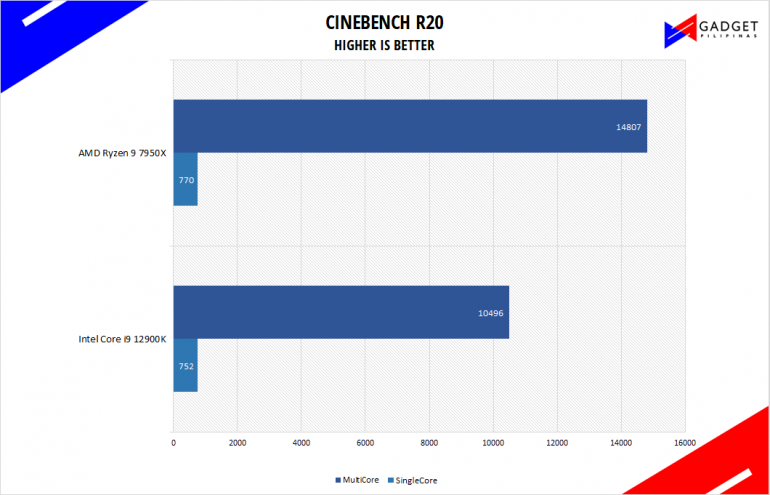
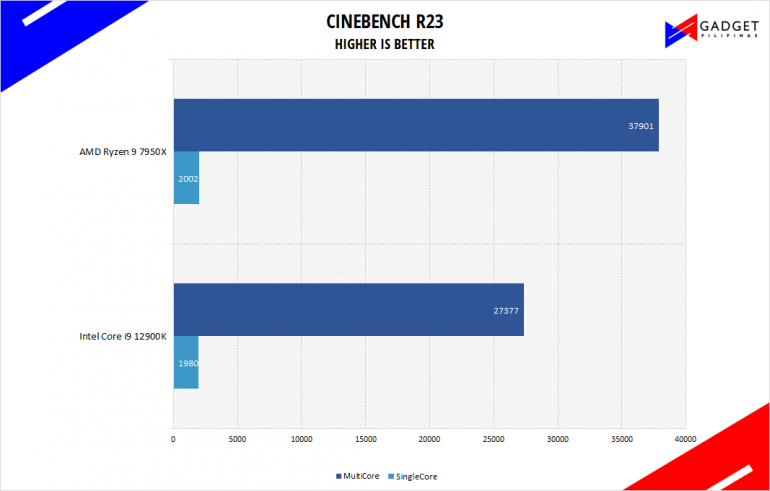
Maxon’s Cinebench benchmark is one of the most iconic benchmark applications used by reviewers and enthusiasts. The latest Cinebench R20 uses the latest rendering architectures, including Intel’s Embree ray tracing technology and other advanced features from AMD and Intel that allow users to render the same scene on the same hard. Cinebench R20 uses a larger and more complex testing scene than Cinebench R20 by about 8x computational power and requires 4x the memory.
PCMark10
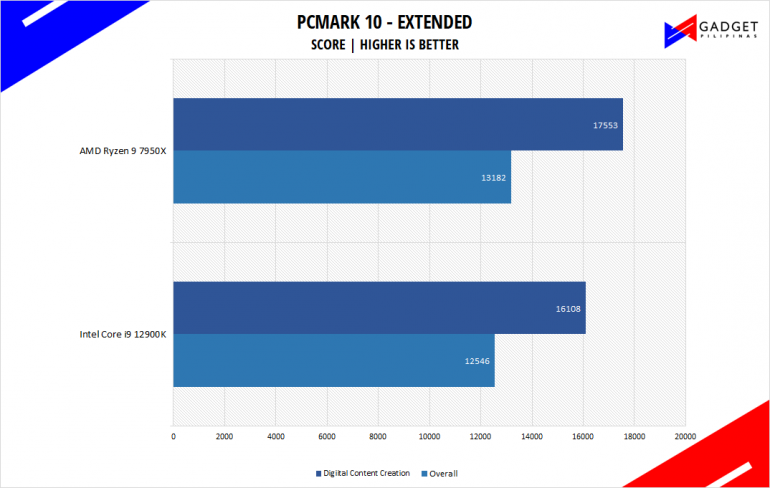
From the same developers of the popular game benchmarking tool 3DMark, PCMark 10 is a benchmarking app for measuring a whole PC’s performance. It covers a wide variety of tests to reflect common tasks performed in a modern workplace. We selected PCMark 10’s extended benchmark and reported both the overall score and Digital Content Creation Score.
RealBench 2.56
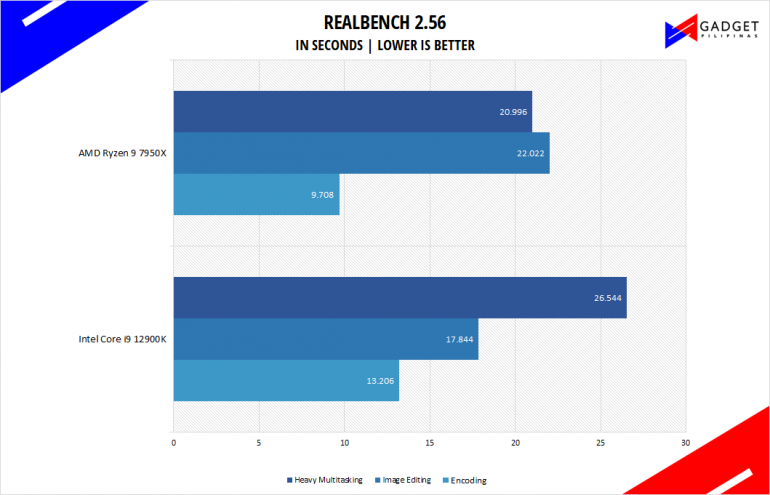
Realbench, developed by ASUS, is a benchmark application that uses real, open source applications to test your PC’s performance as it would perform in real life. There are three tests available with each test using different parts of the PC’s subsystem so that all areas are covered. Instead of using the individual and total scores, we choose to display the completion time in seconds for a more measurable metric.
V-RAY 4.10 & 5
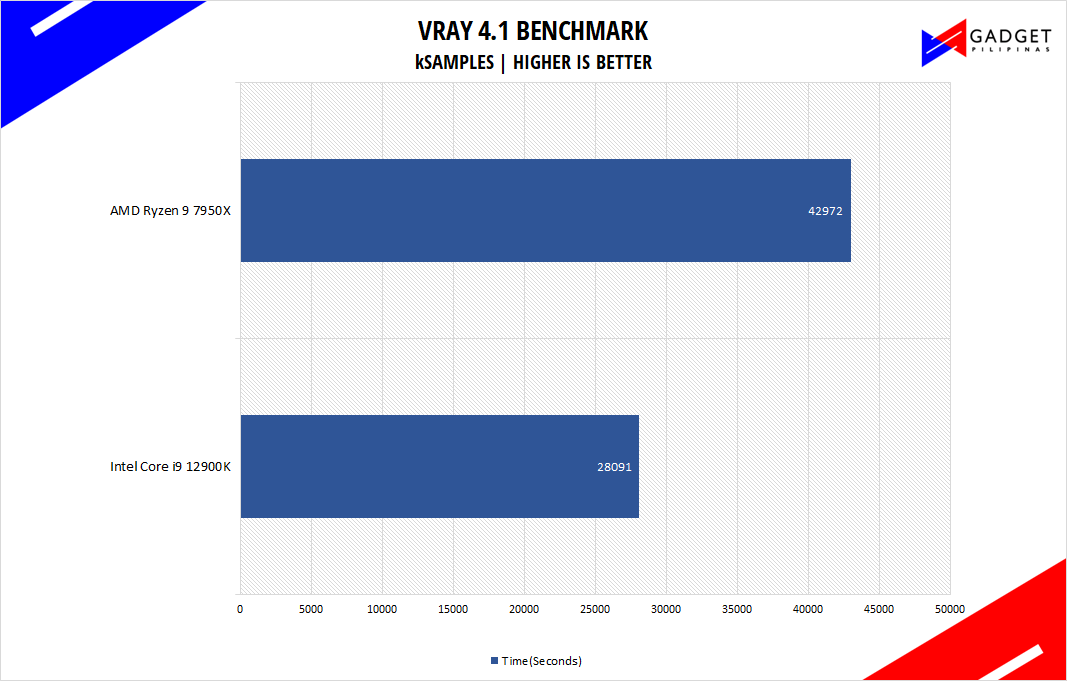
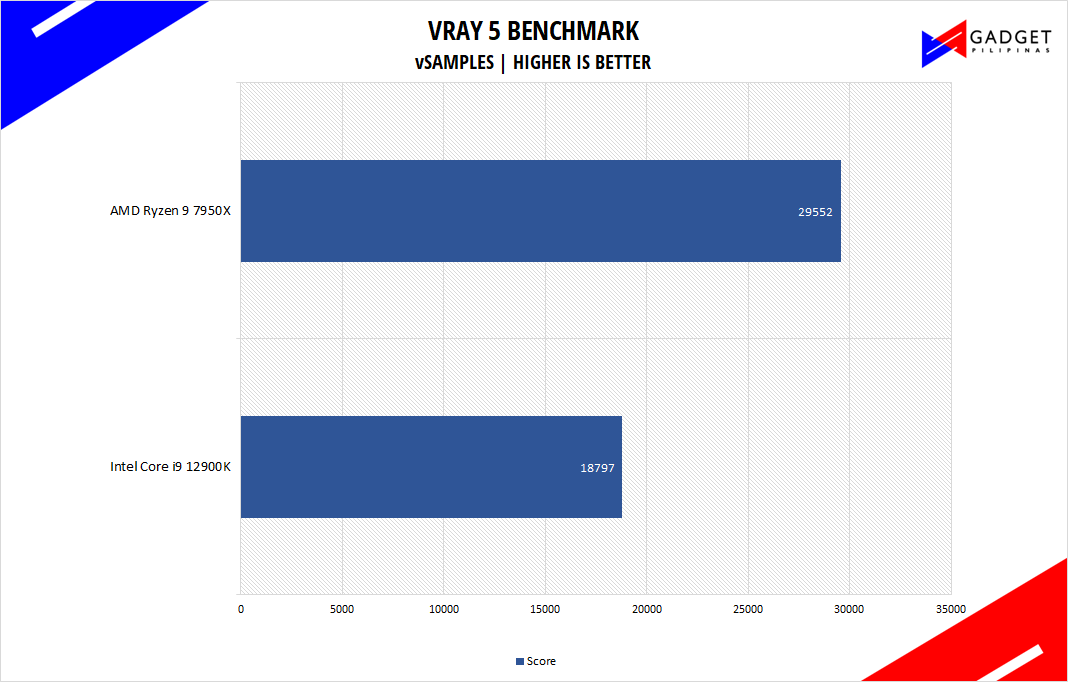
V-Ray Benchmark is a stand-alone version of V-Ray developed by Chaos Group. It is designed to test the CPU and GPU by rendering sample scenes at a fixed amount of time. V-Ray is a plug-in mostly utilized by 3D computer graphics software applications mainly for industrial design, product design, architecture, film, and video game production. V-Ray is not limited to 64-threads as it supports multi and mega-threading.
BLENDER
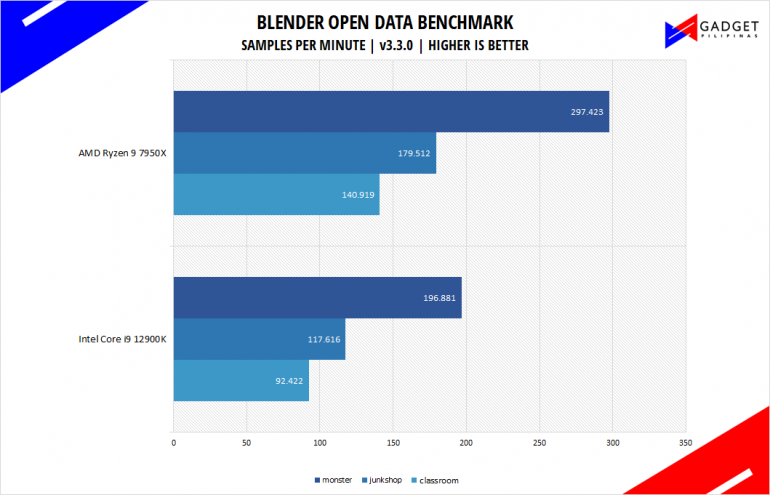
Blender is a widely used, free, open-source 3D creation suite. It supports the whole 3D pipeline process from modeling, rigging, animation, simulation, rendering, and even motion tracking. Blender has become a standard for CPU benchmarks with the BMW27 and Classroom scene most used. This prompted the company to release Blender Open Data Benchmark in 2018, a benchmark-specific version that allows users to run a preset benchmark and share the results online similar to 3D Mark.
CORONA RENDERER
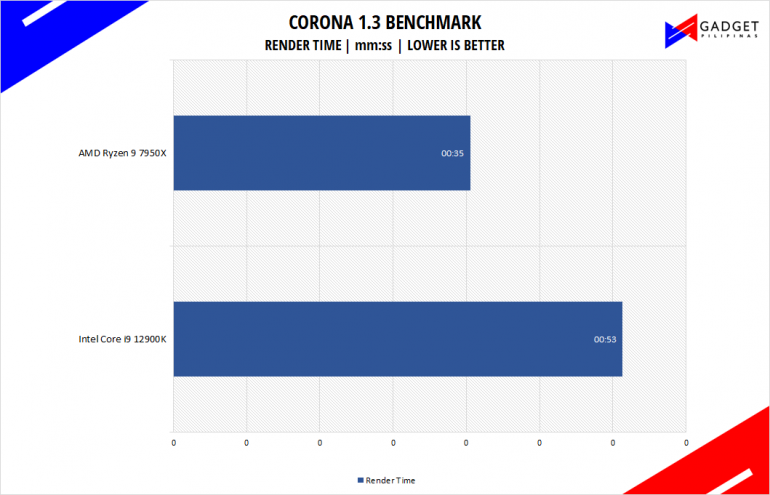
Corona Renderer is an unbiased photorealistic render available for Autodesk 3Ds Max, Maxon Cinema 4D, and as a stand-alone application. Its popularity, like Blender, led Chaos Group to develop a benchmark version of the app which runs using Corona Renderer 1.3. Workstation systems, especially CPUs, can utilize Corona Benchmark as up to 72 threads can be used in the benchmark, making it very suitable for CPUs with various price segments.
HANDBRAKE
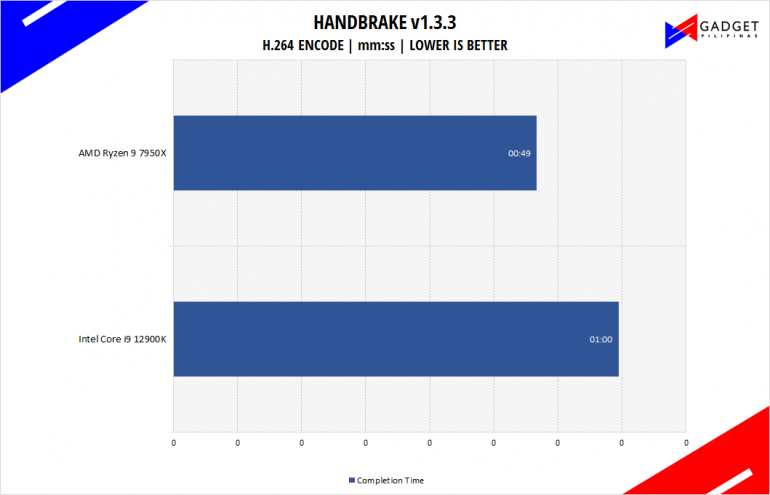
Handbrake is a top-rated open-source video conversion software that is used by professionals, enthusiasts, and even reviewers as a reference point mainly because of its wide variety of media codecs. The rise of streaming and blogging makes video content, both encoding, and transcoding important for these people, regardless of whether they’re seasoned professionals or just starting out. Handbrake also takes advantage of AVX-512 and OpenCL to accelerate certain types of media codecs. Our Handbrake benchmark converts a 500MB MP4 video to H.264 to measure the processor’s performance.
3DMARK
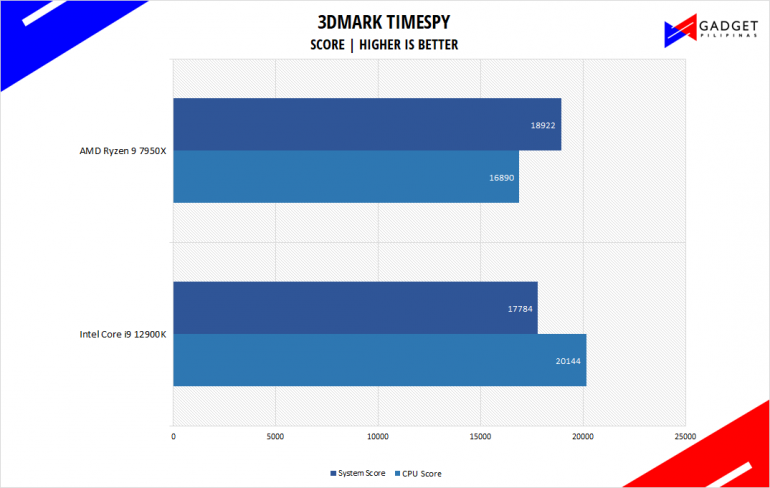
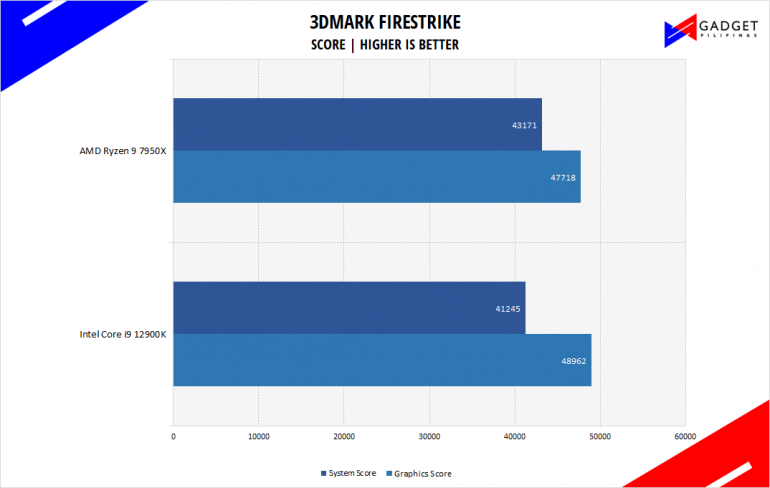
3DMark is the go-to benchmark for gamers because of the ability to share and compare results online. We tested the Intel Core i9 12900K both in Fire Strike and Time Spy to get a good gauge of DX 11 and DX 12 API performance.
UL PROCYON VIDEO EDITING
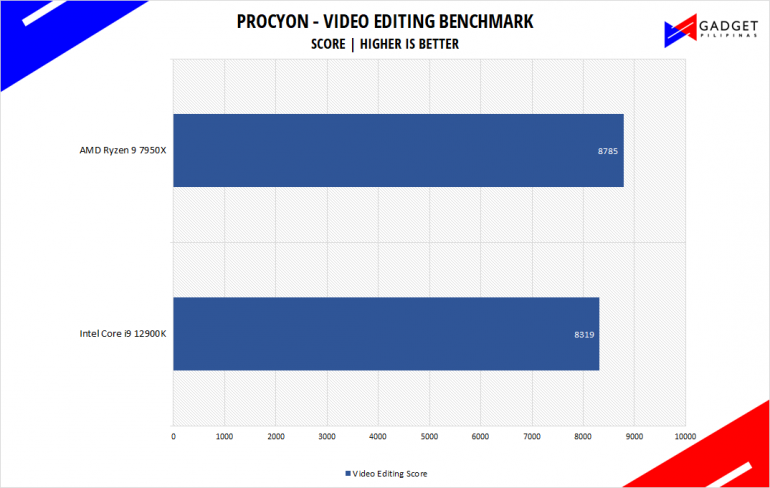
Procyon benchmark suite is developed by the UL, the same team behind 3DMark and PCMark benchmarks. The UL Procycon video editing benchmark uses Adobe Premiere in a typical video editing workflow. The benchmark starts by importing two video project files with various edits, adjustments, and effects – the second project uses several GPU-accelerated effects. Each project is exported in 1080p with H.264 encoding and again in 4K with HEVC H.265. The reported score is based on the time taken to export all four videos.
GOOGLE OCTANE 2.0
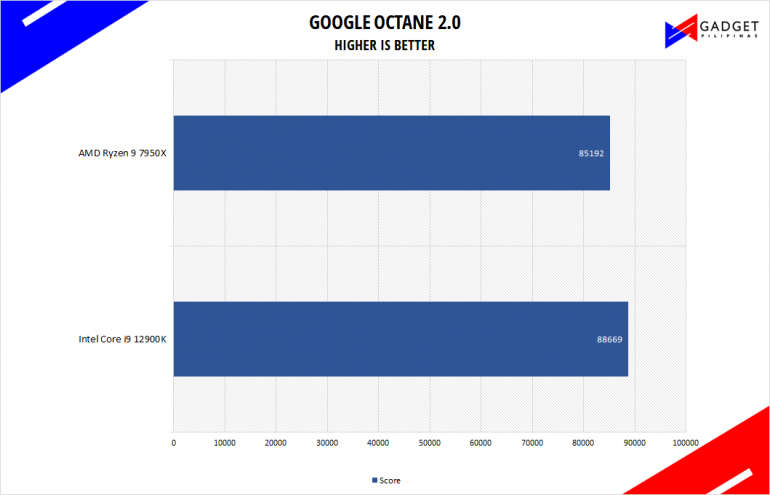
Google Octane 2.0 is a benchmark that measures a Javascript engine’s performance by running multiple tests representing different use cases of JavaScript applications. While Google Octane is retired and no longer maintained, it is still a good representation of today’s dynamic, interactive web applications. Our Google Octane 2.0 is run on Microsoft’s latest Chromium-based Edge browser.
AMD Ryzen 9 7950X Gaming Benchmarks
COUNTER STRIKE: GLOBAL OFFENSIVE
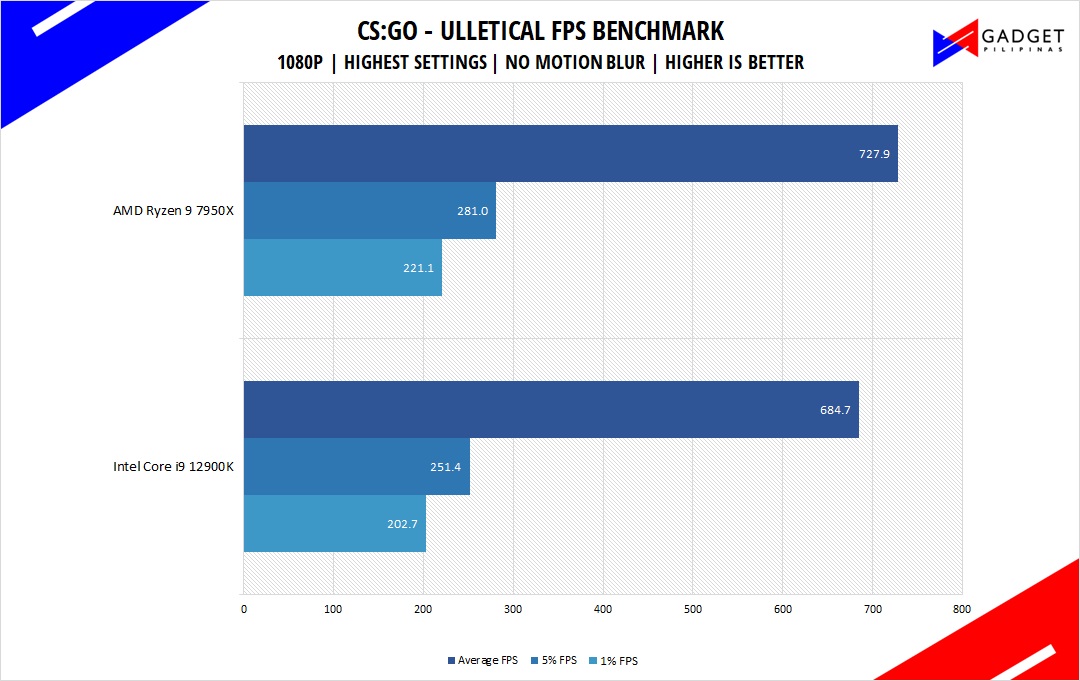
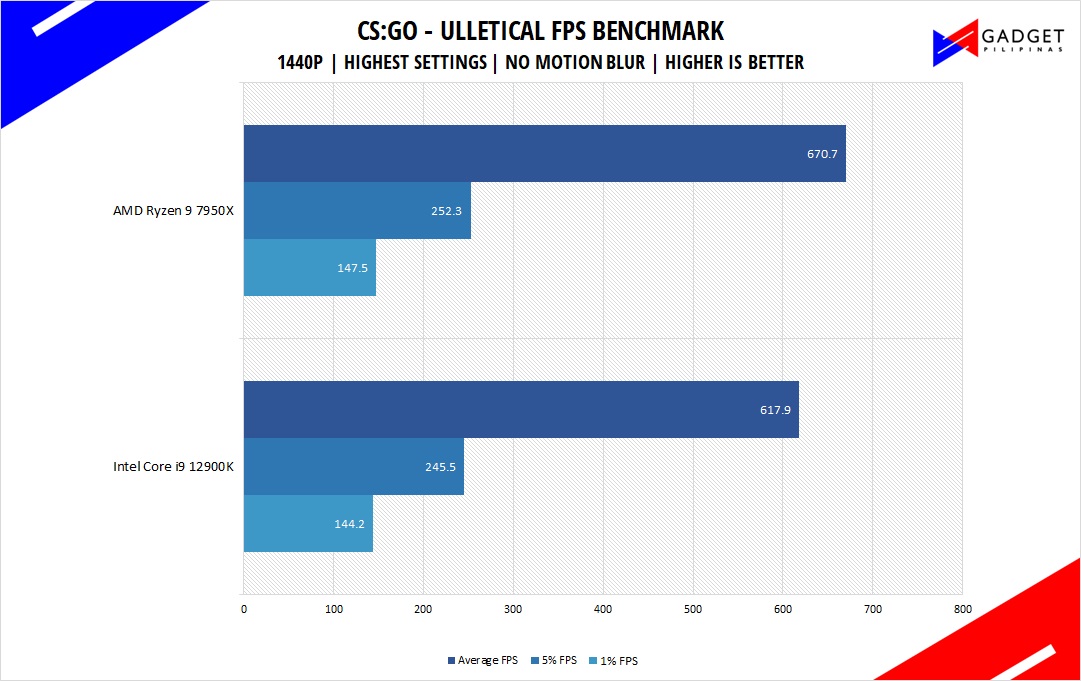
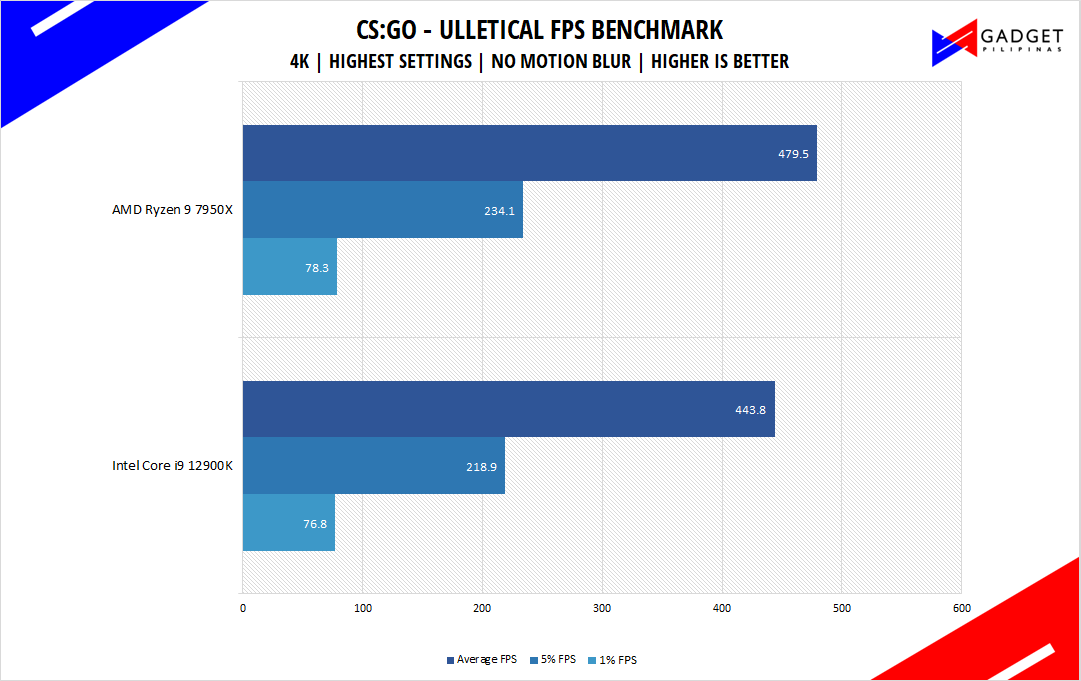
Counter Strike: Global Offensive aka CSGO is an 11-year-old first-person shooter title that’s still widely popular despite its old Source Engine. CS:GO is a great game to test out CPU performance as the game is heavily CPU-dependent like any other FPS title. Our CS:GO benchmark process uses ULLETICAL’s FPS Benchmark workshop mod to measure the hardware’s performance.
DOTA 2
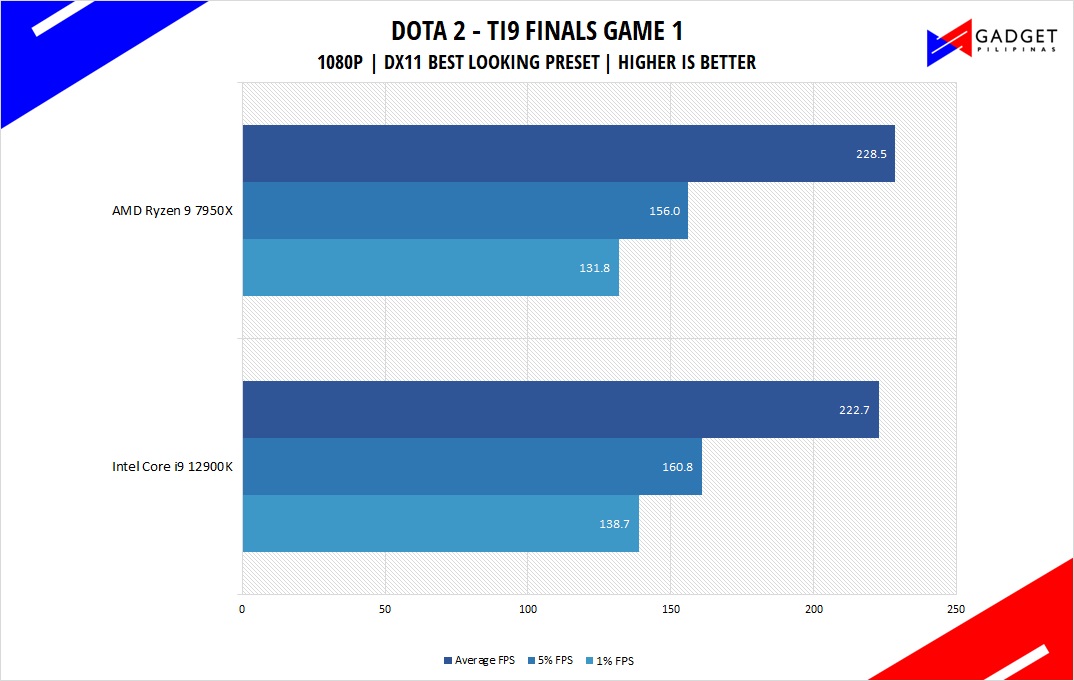
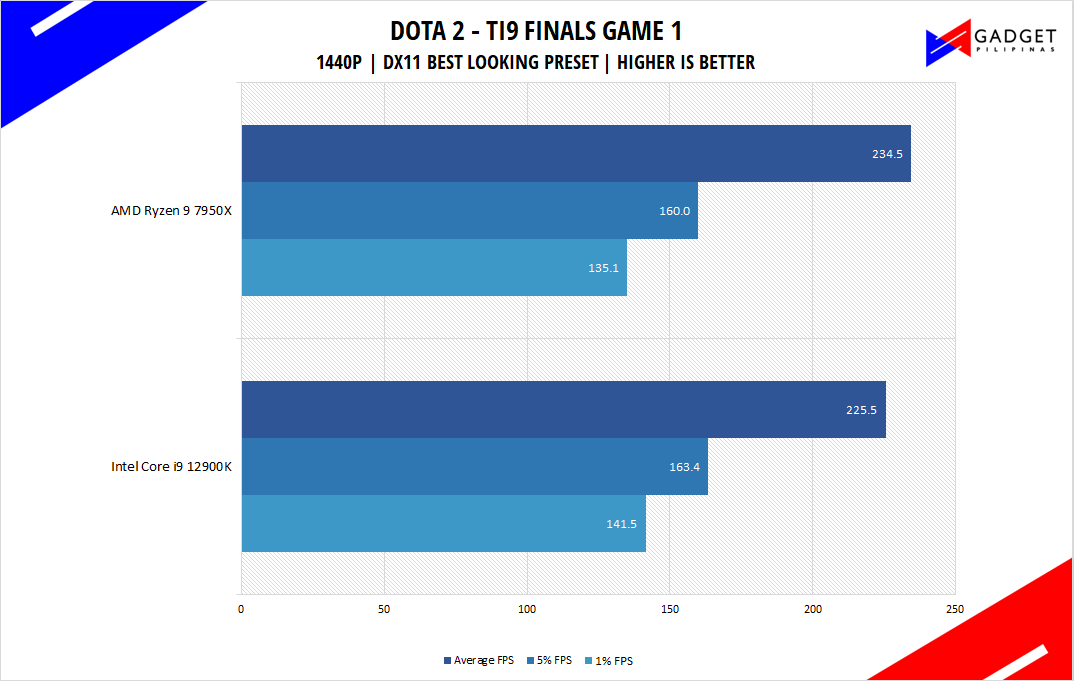
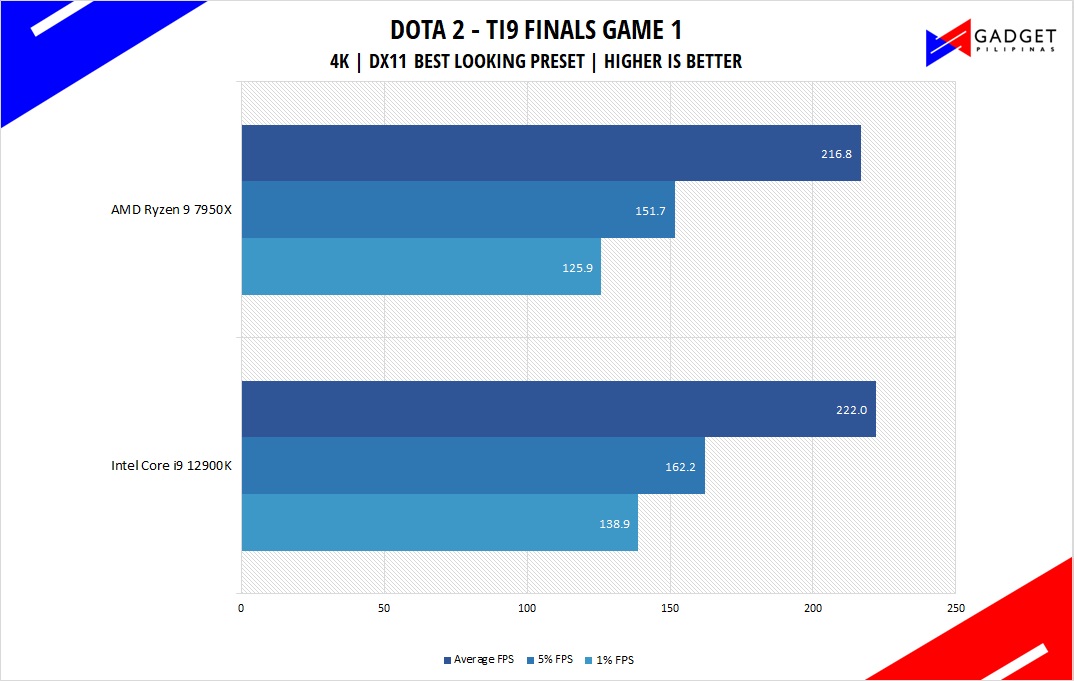
Most gamers play at least one of the following free-to-play titles: League of Legends, CS: GO, Dota 2, and/or Fortnite. Dota 2 is a good representation of the F2P titles as it is the most demanding game in the spectrum. The benchmark will give you an idea of the graphic card’s relative performance on other lesser demanding titles. Our benchmark sequence is based on a replay of OG vs. Liquid in the TI9 grand finals from the team fight that happened from 28:30 to 29:30.
Far Cry 5 & Far Cry 6
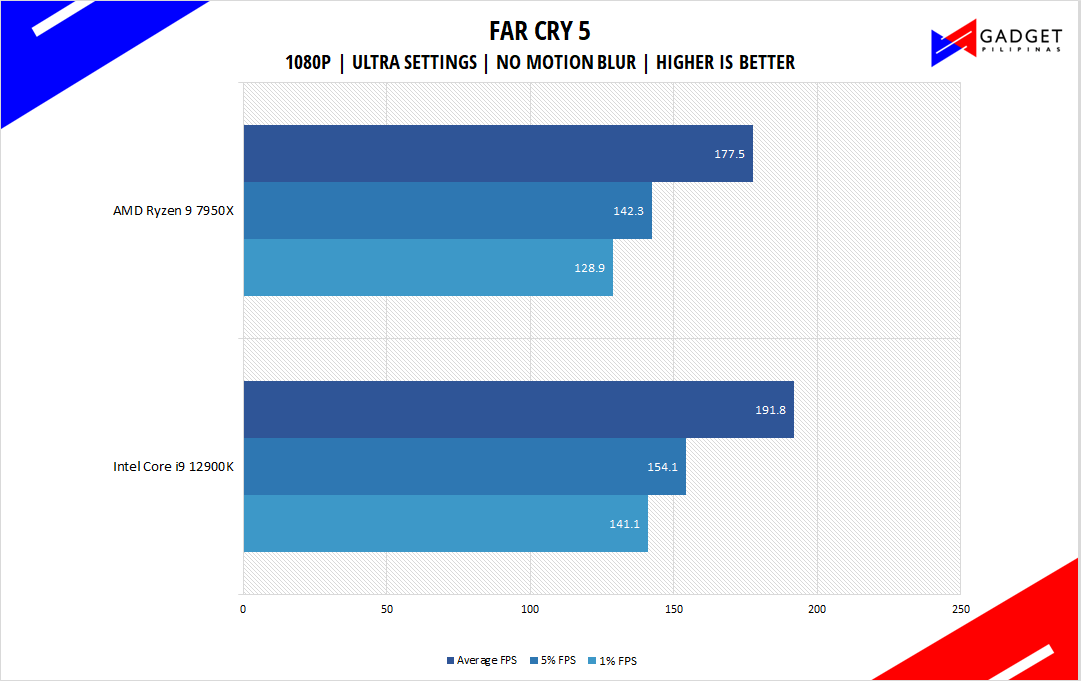
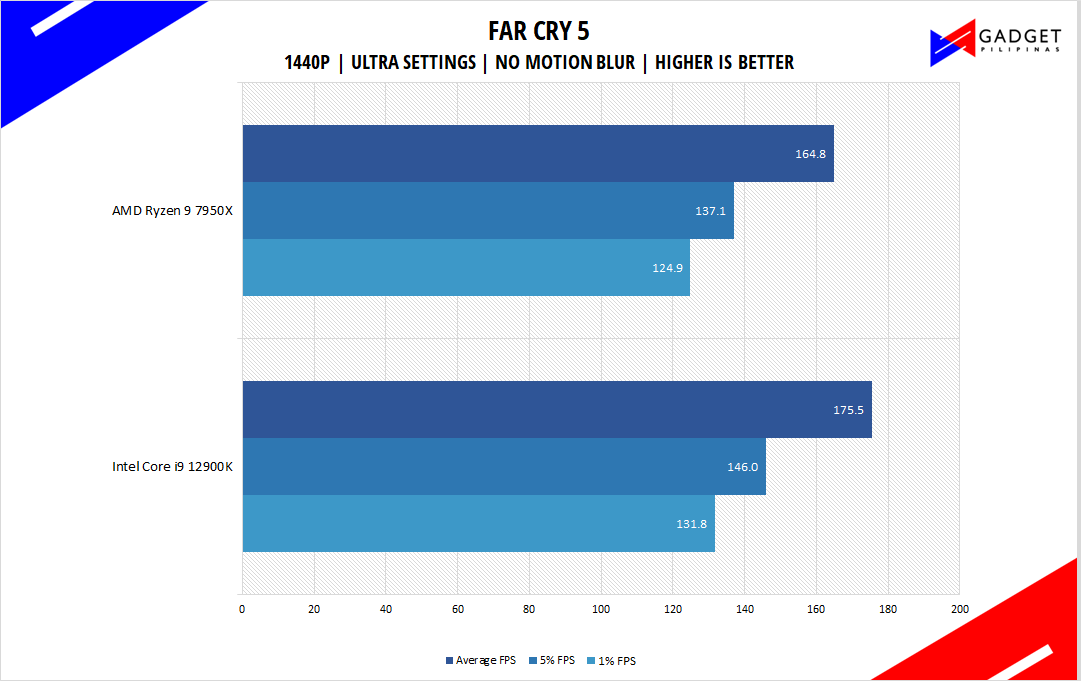
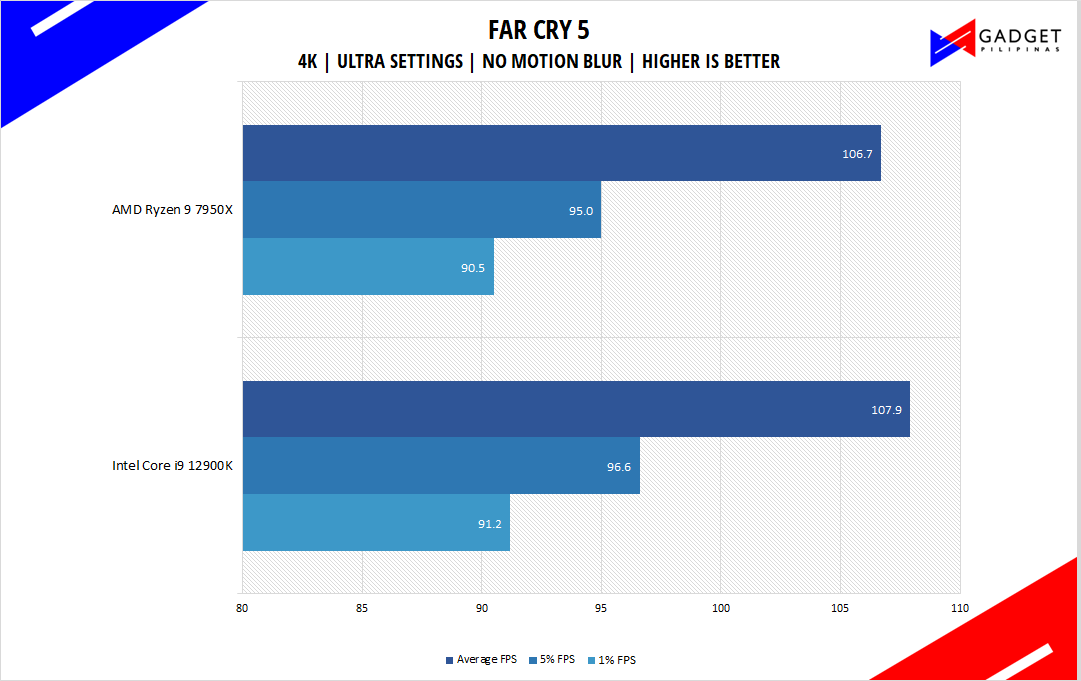
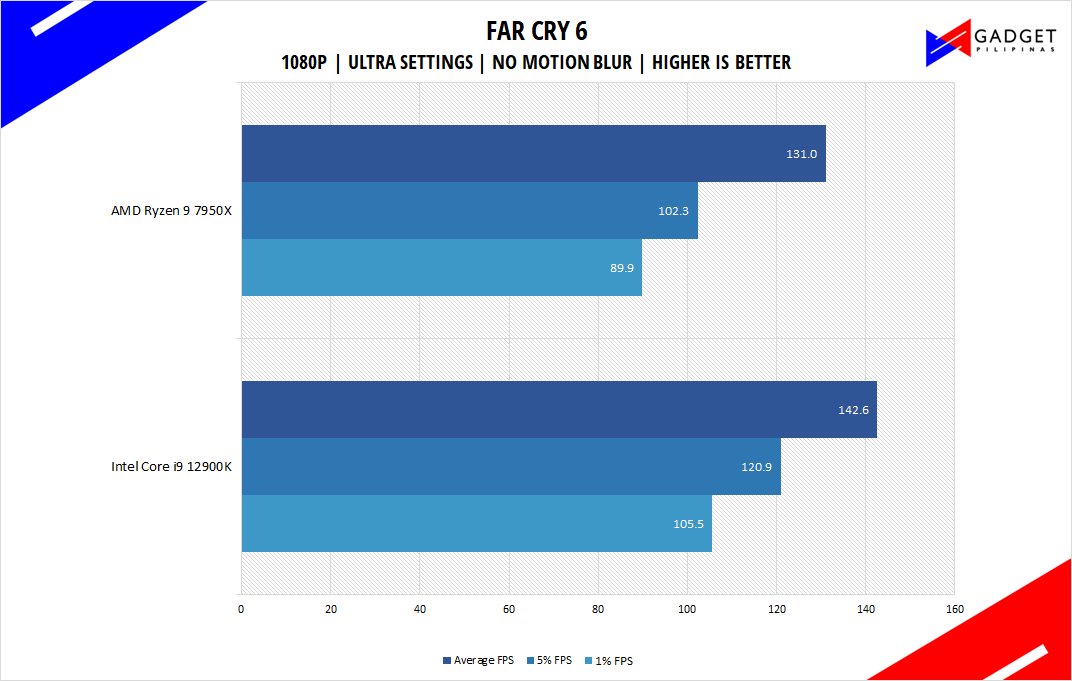
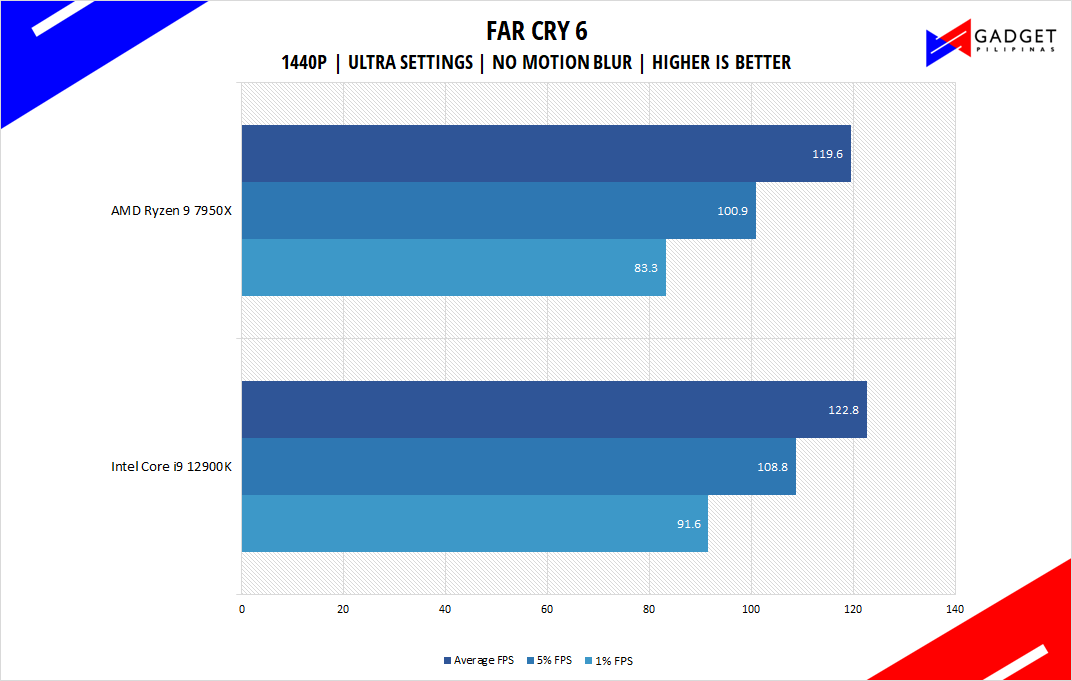
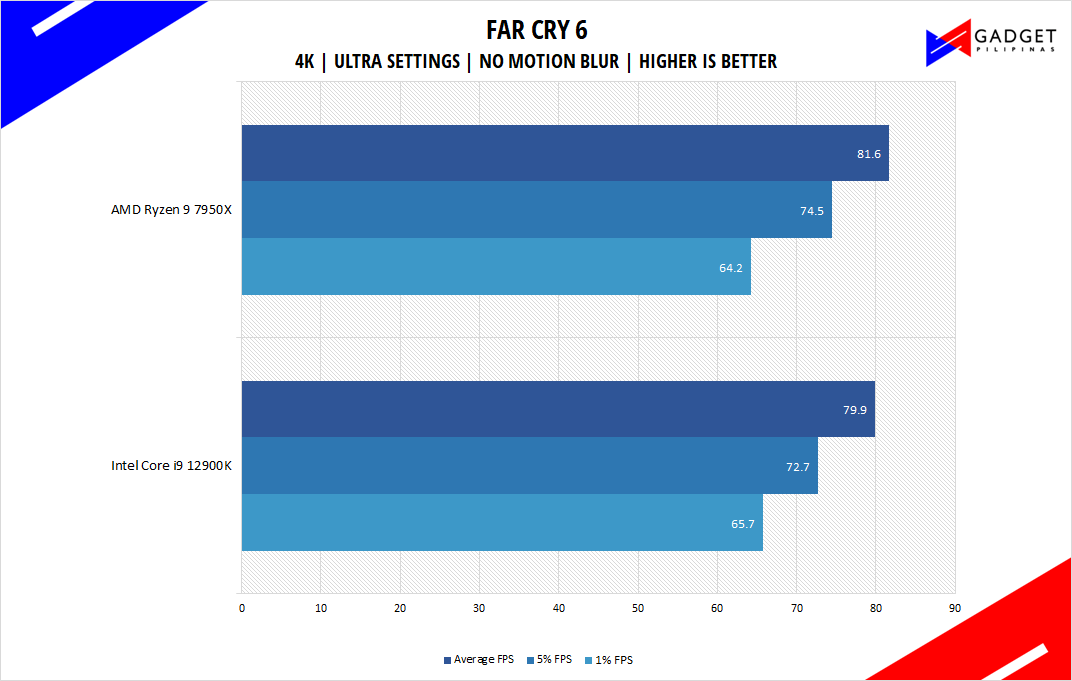
FarCry 5 is an FPS game published by Ubisoft and uses the Dunia engine. It heavily relies on and takes advantage of DirectX 11 to render a realistic environment that makes it taxing to both the CPU and GPU. Far Cry 6 is the latest installment in the franchise which utilizes DirectX 12 to run the virtual world of Yara.
Cyberpunk 2077
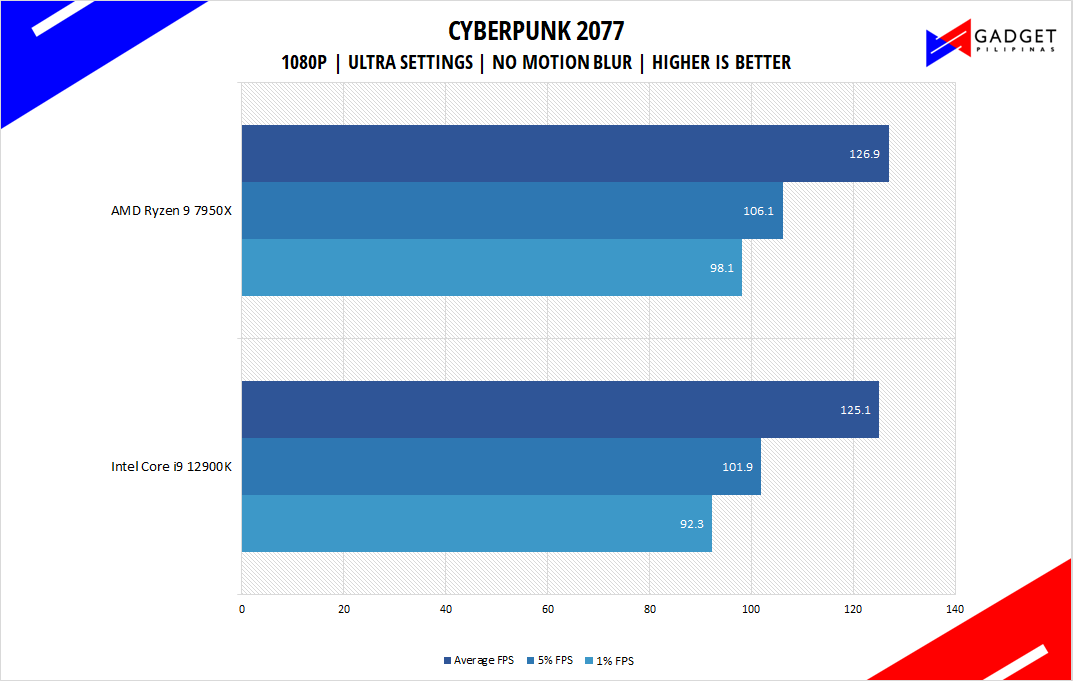
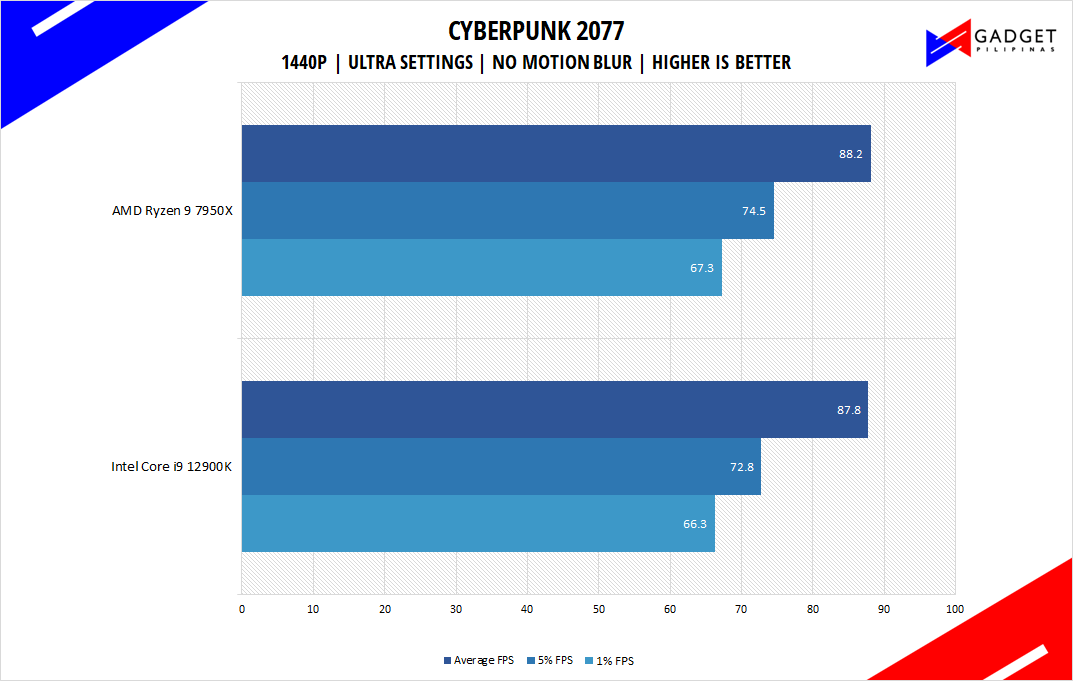
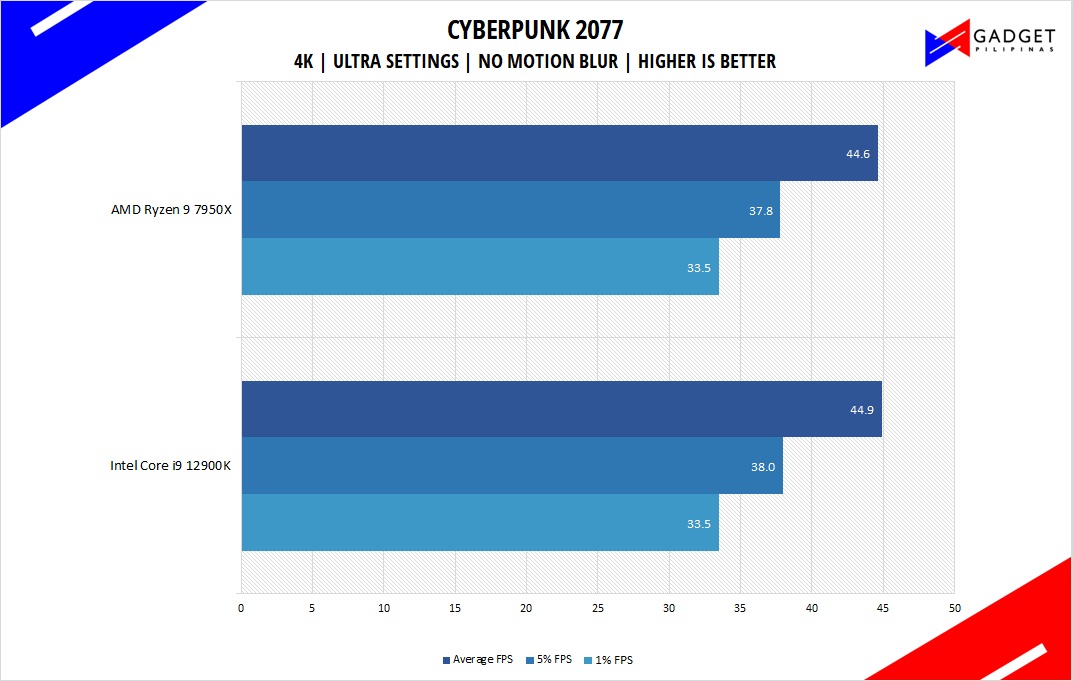
Cyberpunk 2077 is arguably the most hyped game of 2020. Developed by CD Projekt Red, the dystopian open-world, action-adventure RPG sports is one of the most demanding titles to date. Cyberpunk 2077 also supports three Ray Tracing settings as well as DLSS which makes the game a great tool to measure Ray tracing performance for both AMD and Nvidia graphics cards.
Shadow of The Tomb Raider
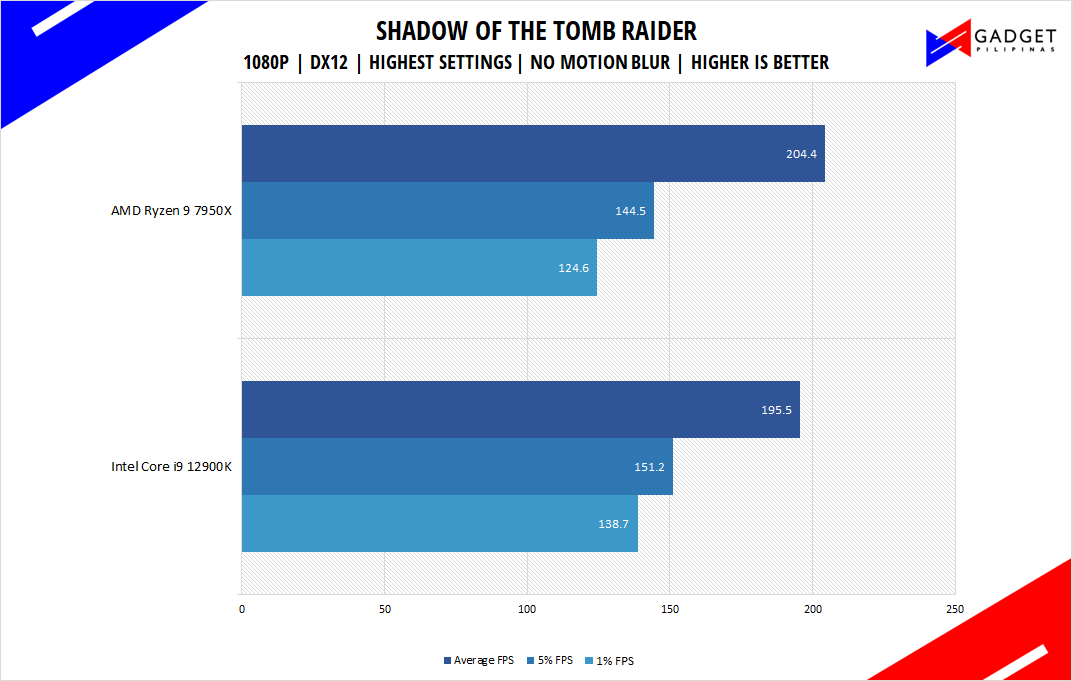
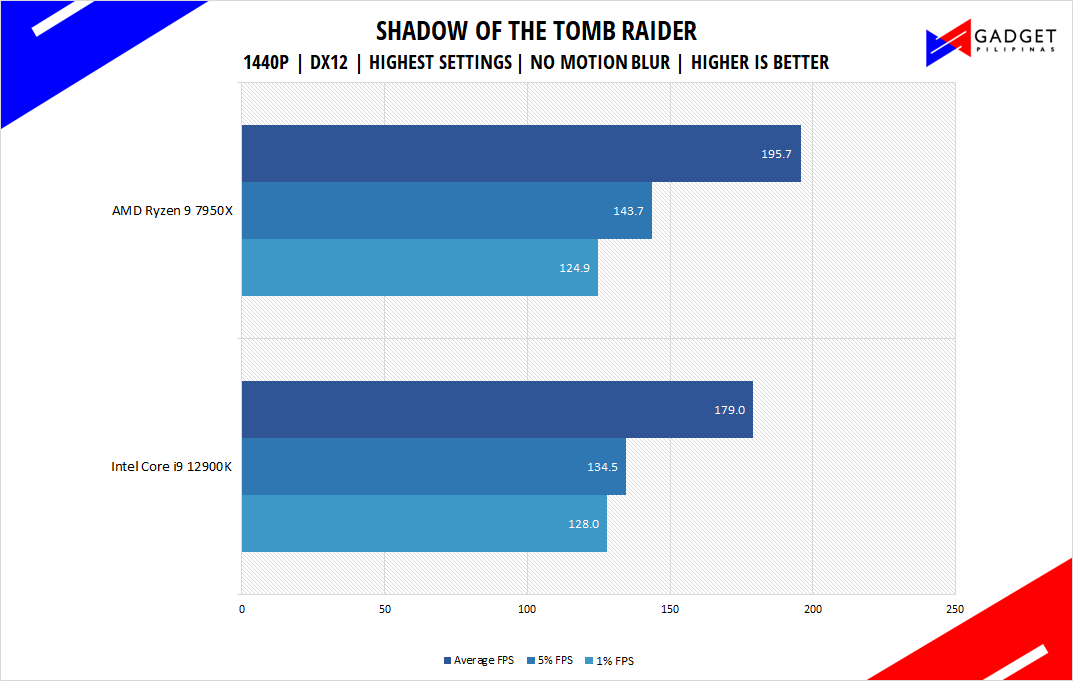
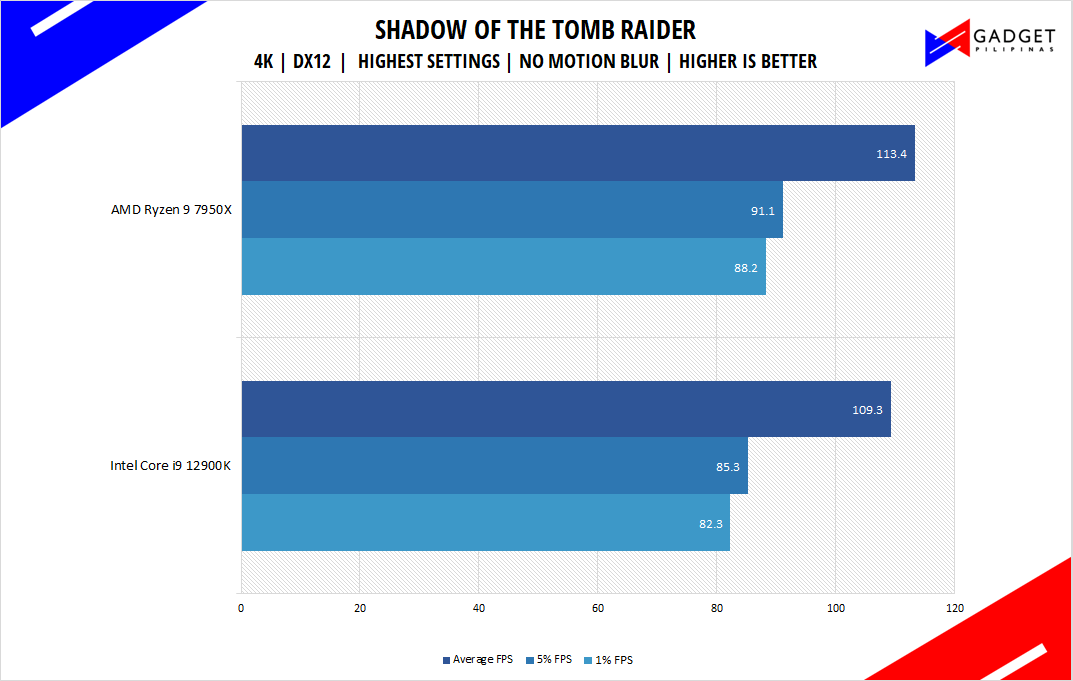
Shadow of The Tomb Raider or SOTR is the latest installment of the Lara Croft Tomb Raider franchise. Developed by Square Enix, SOTR uses the Foundation engine and is further enhanced by Eidos Montreal. SOTR is also one of the first games to come out with Ray Tracing and DLSS support.
Metro Exodus
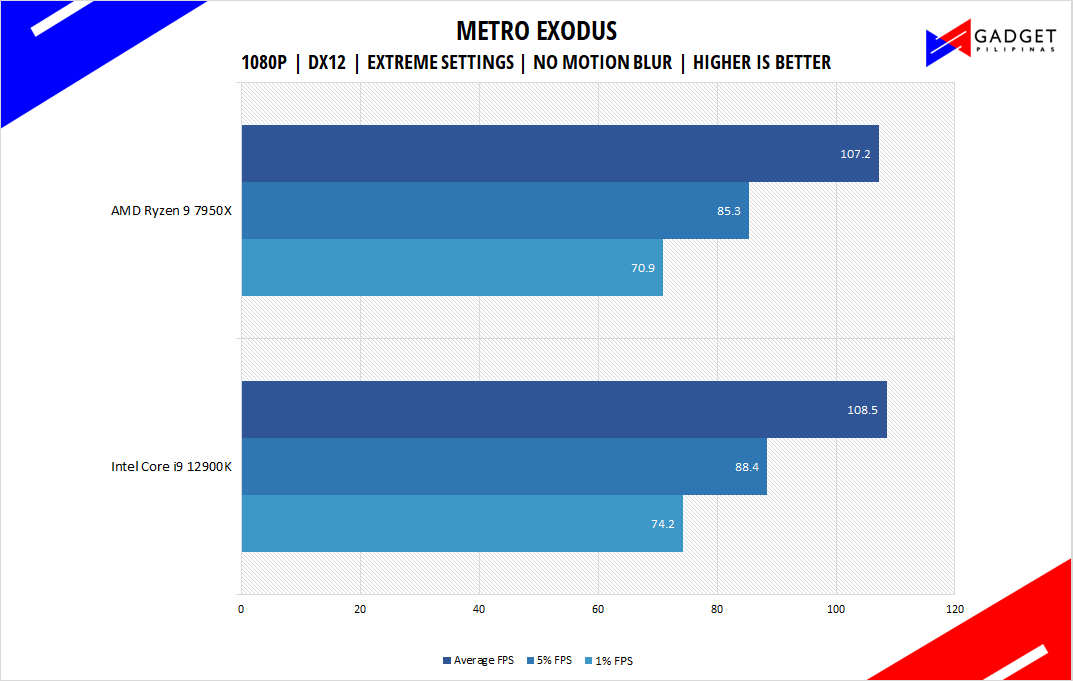
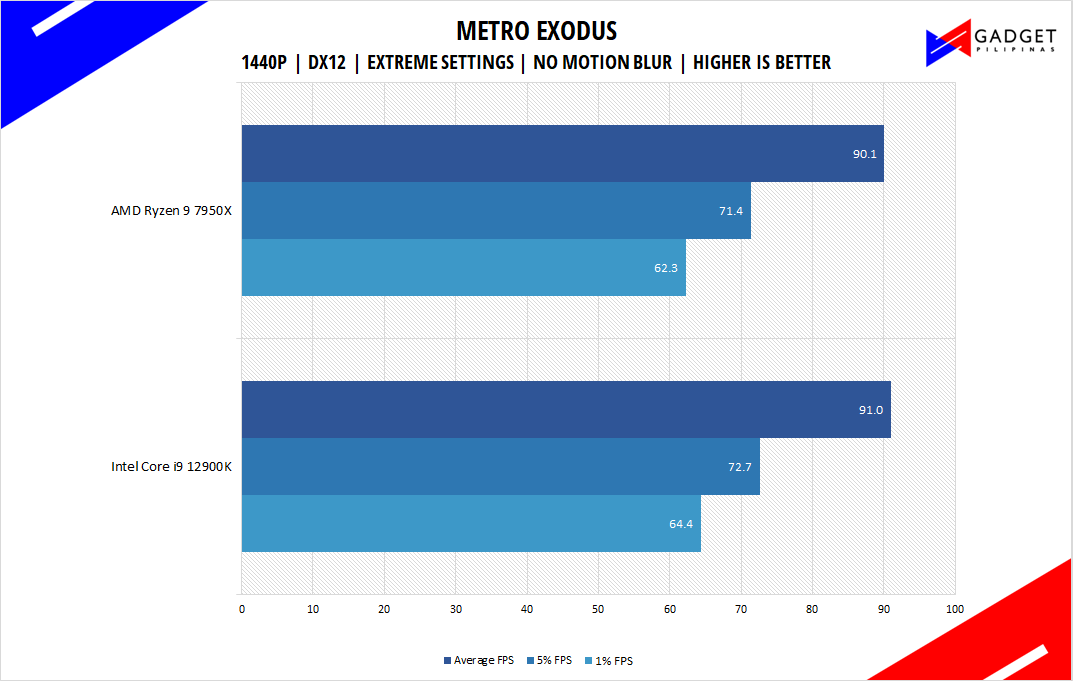
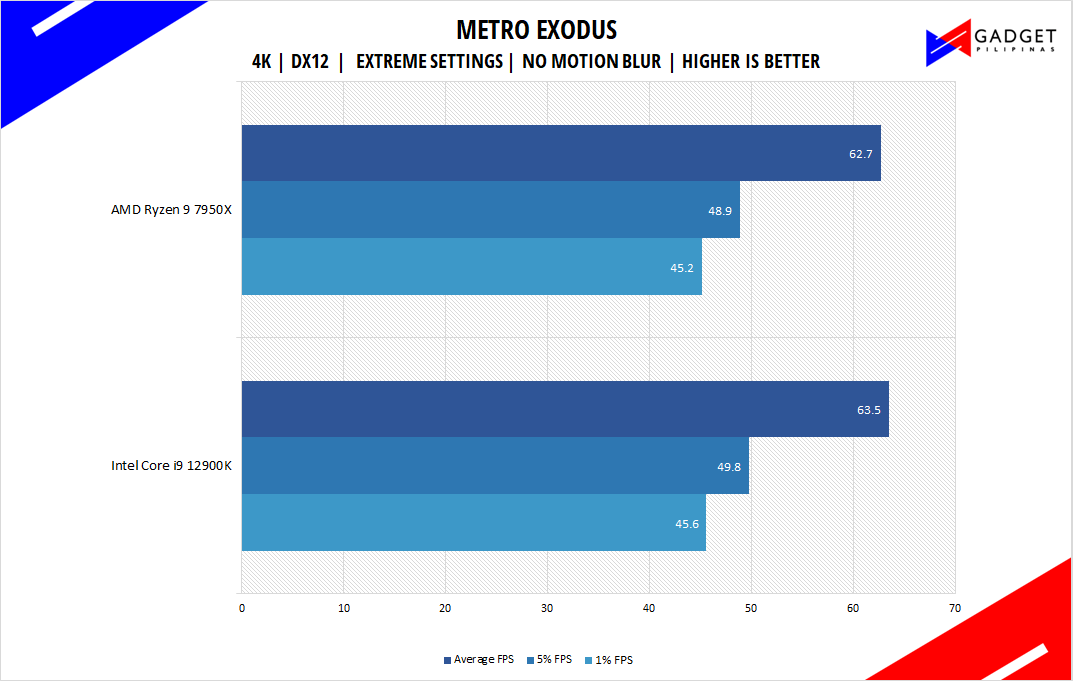
Metro Exodus is the third Metro game trilogy based on Dmitry Glukhovsky’s novels. The game is a first-person shooter with survival horror and stealth elements. The post-apocalyptic game uses 4A Engine by 4A games. Released last 2019, Metro Exodus remains to be one of the most graphically pleasing and demanding games that’s popular to date.
Assassin’s Creed: Odyssey and Valhalla
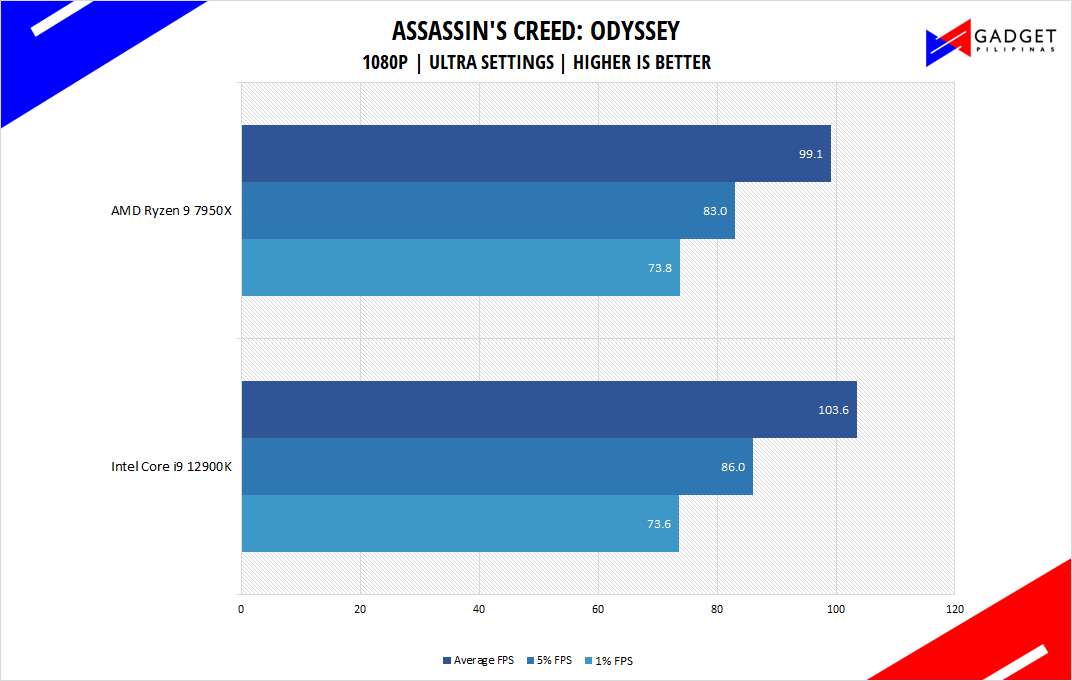
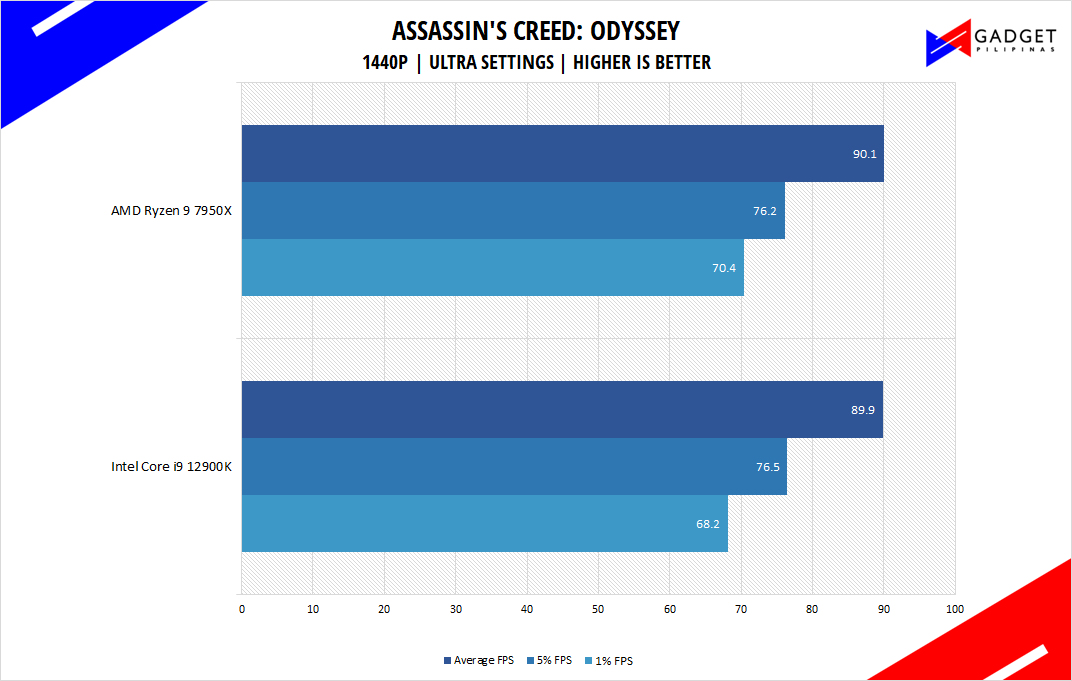
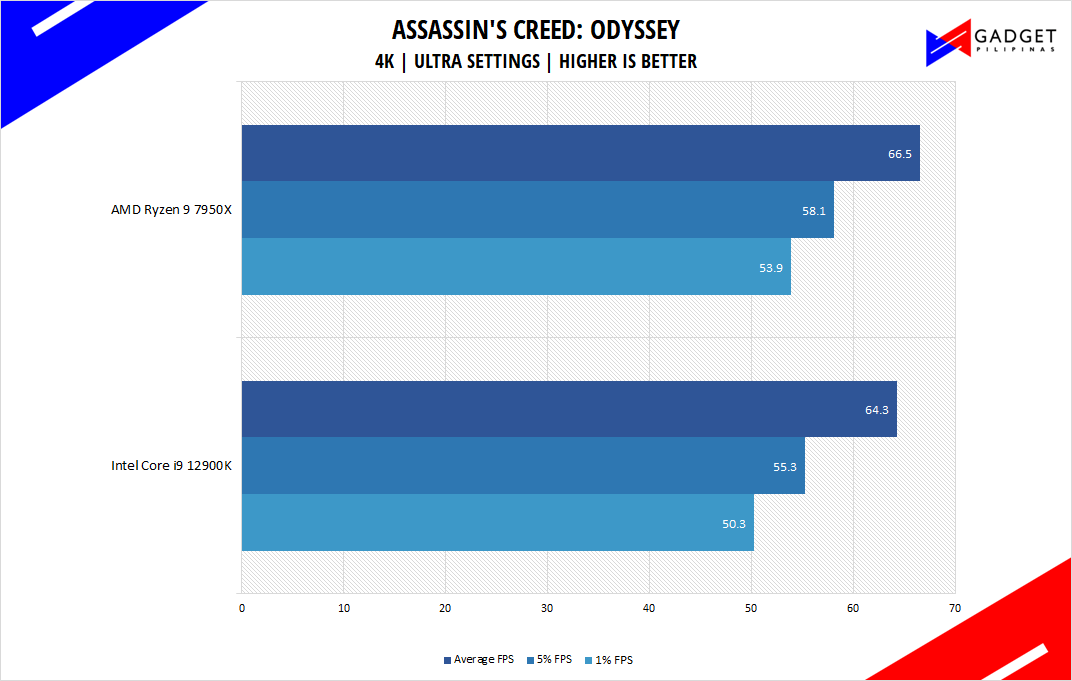
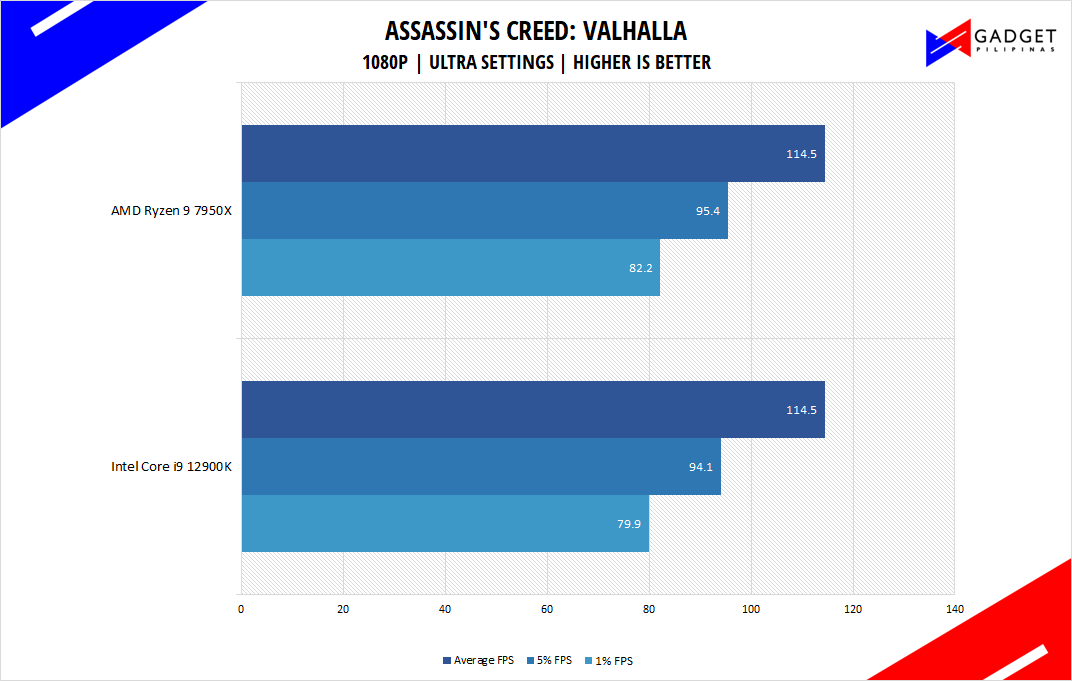
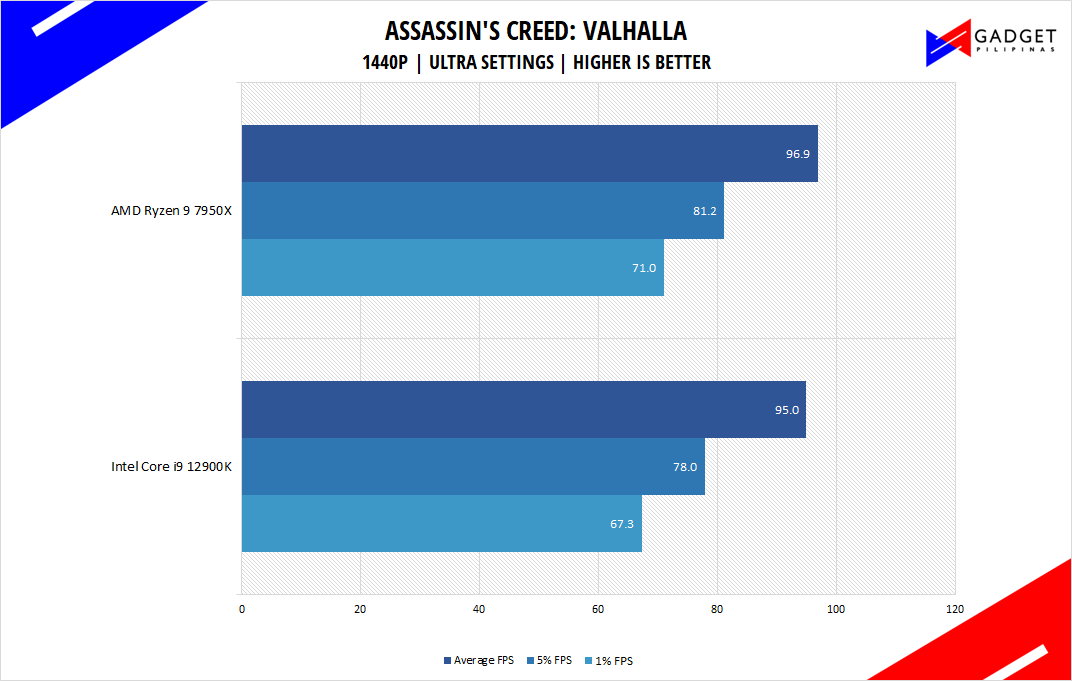
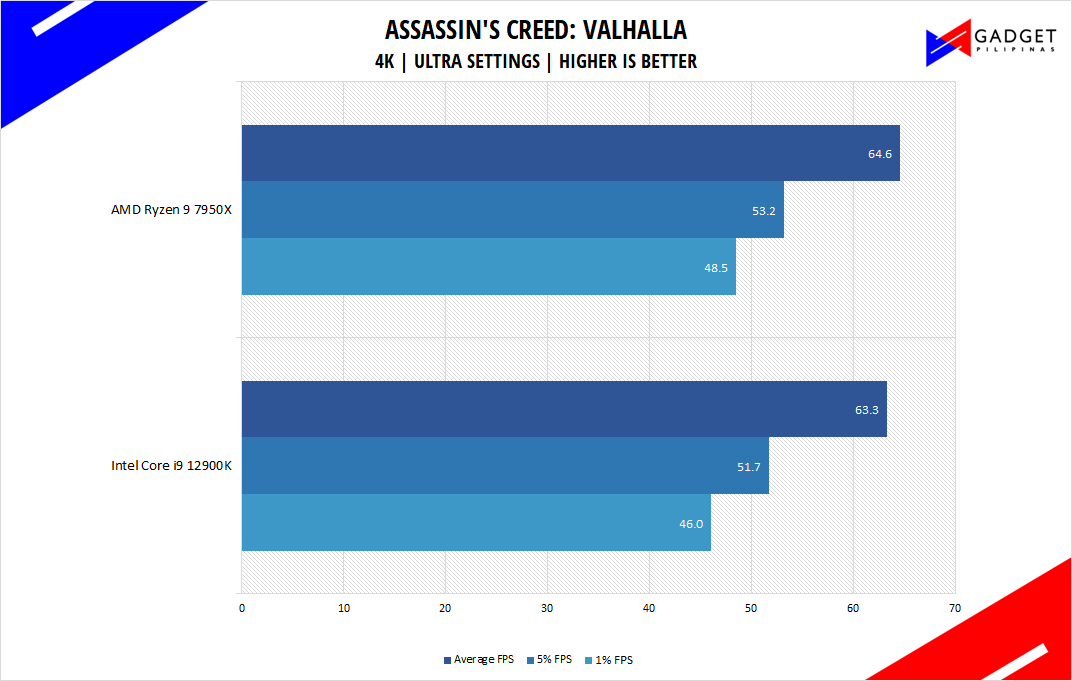
Assassin’s Creed Odyssey is the latest franchise installment from Ubisoft. It’s by far the most popular and stable Assassin’s Creed title since AC IV: Black Flag. It uses the AnvilNext 2.0 game engine, an updated version of Rainbow Six Siege’s game engine, and uses the DirectX 12 API.
F1 2020 and F1 2022
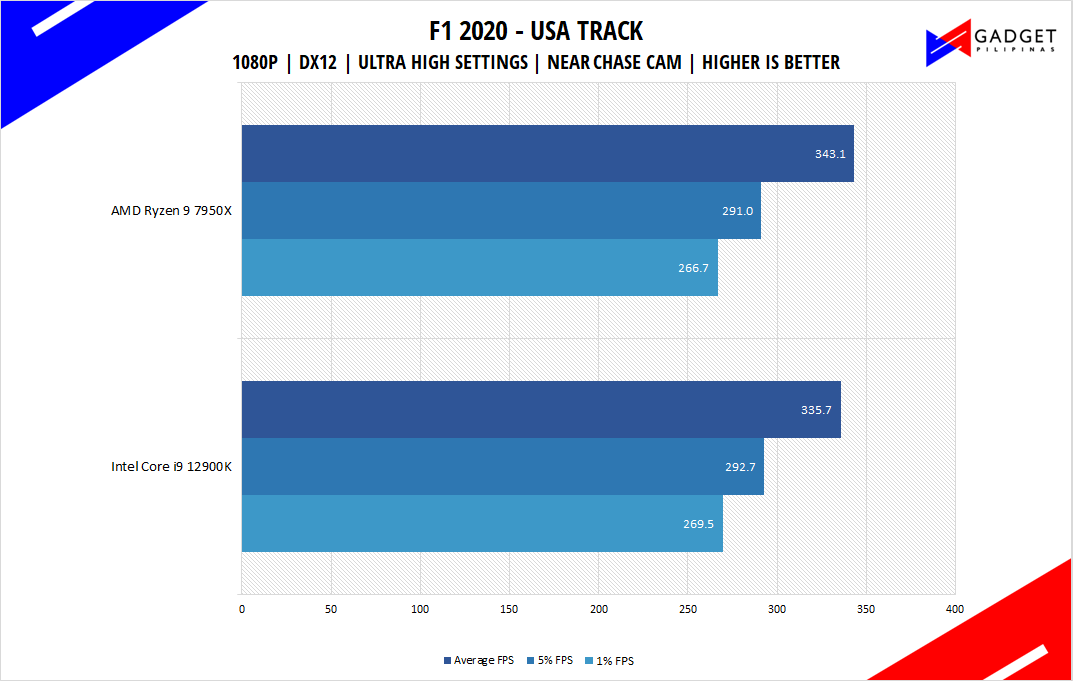
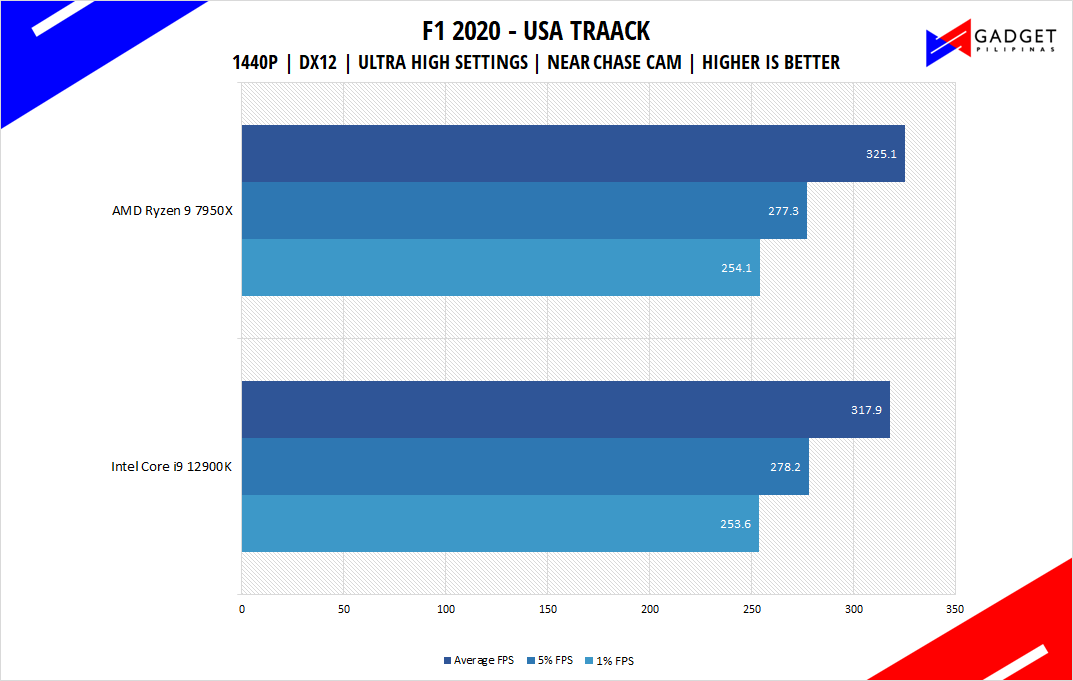
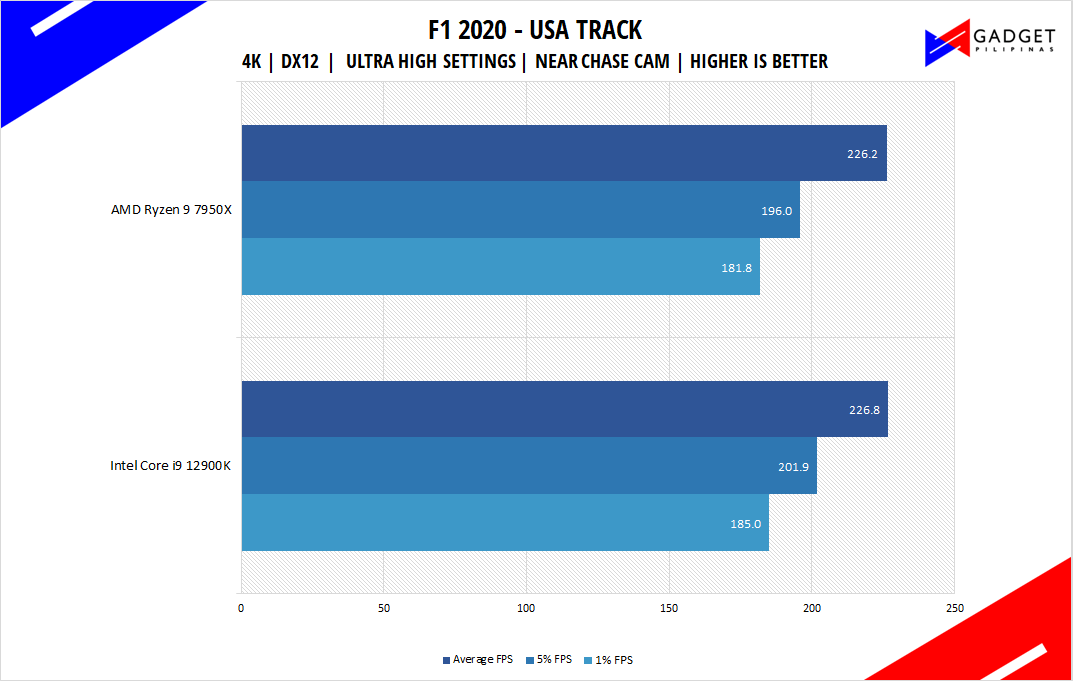
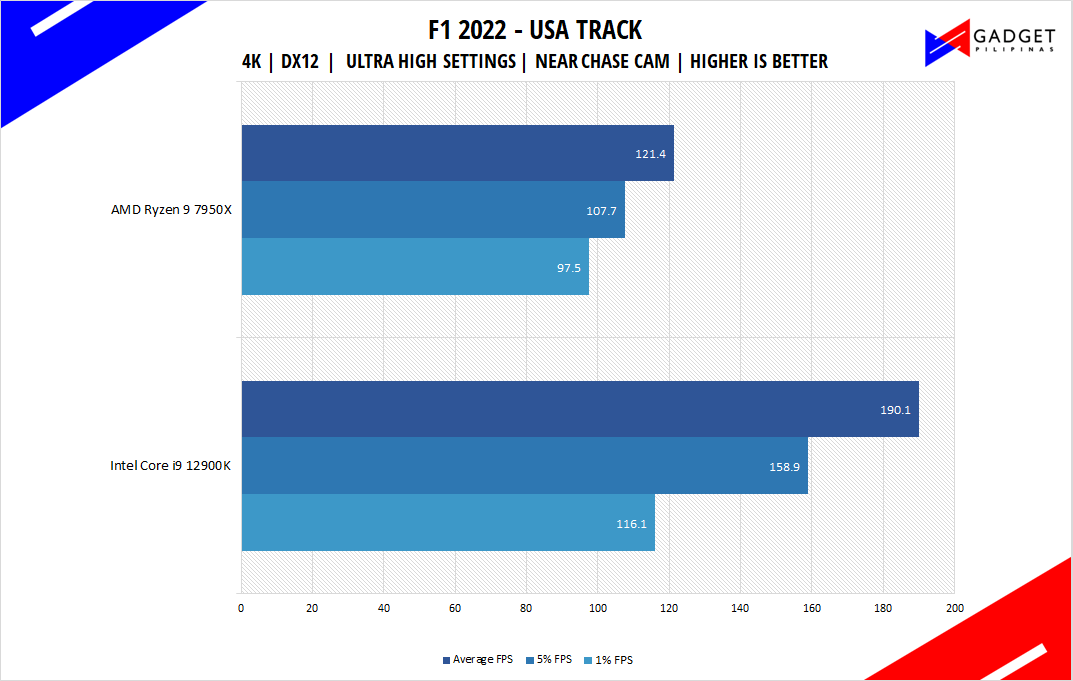
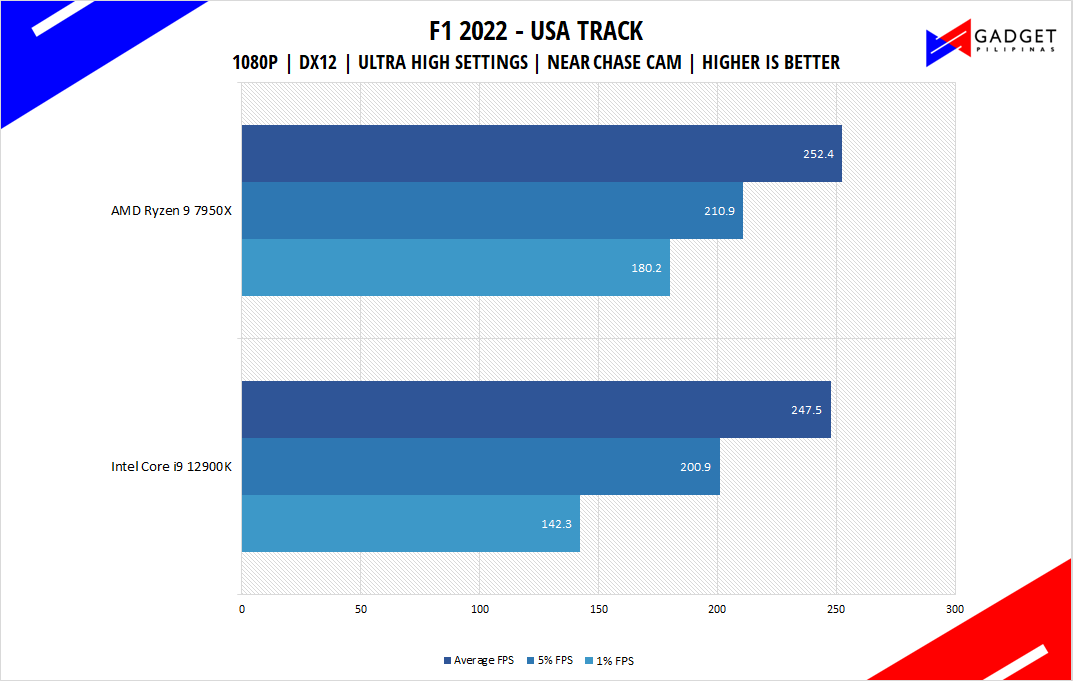
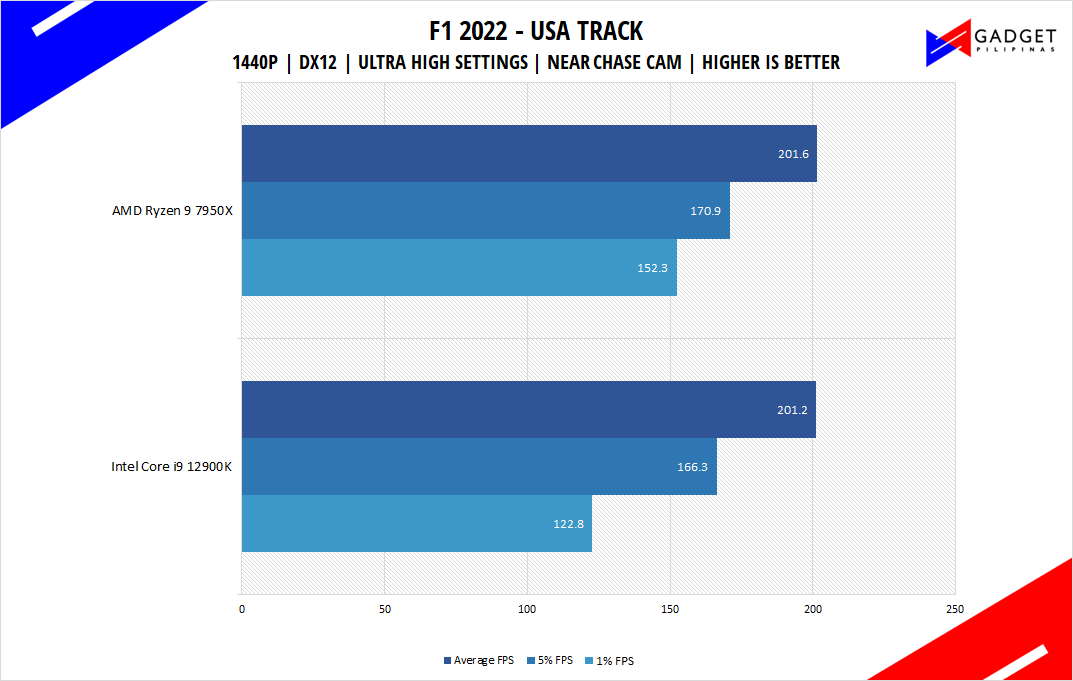
F1 2020 is the official video game of the 2020 Formula 1 and Formula 2 championships developed by Codemasters. F1 2020 is the twelfth installment in the franchise and uses the Ego Engine 3.0. F1 2020 is a good representation of racing games thanks to its realistic graphics and fairly demanding spec requirements.
Horizon Zero Dawn
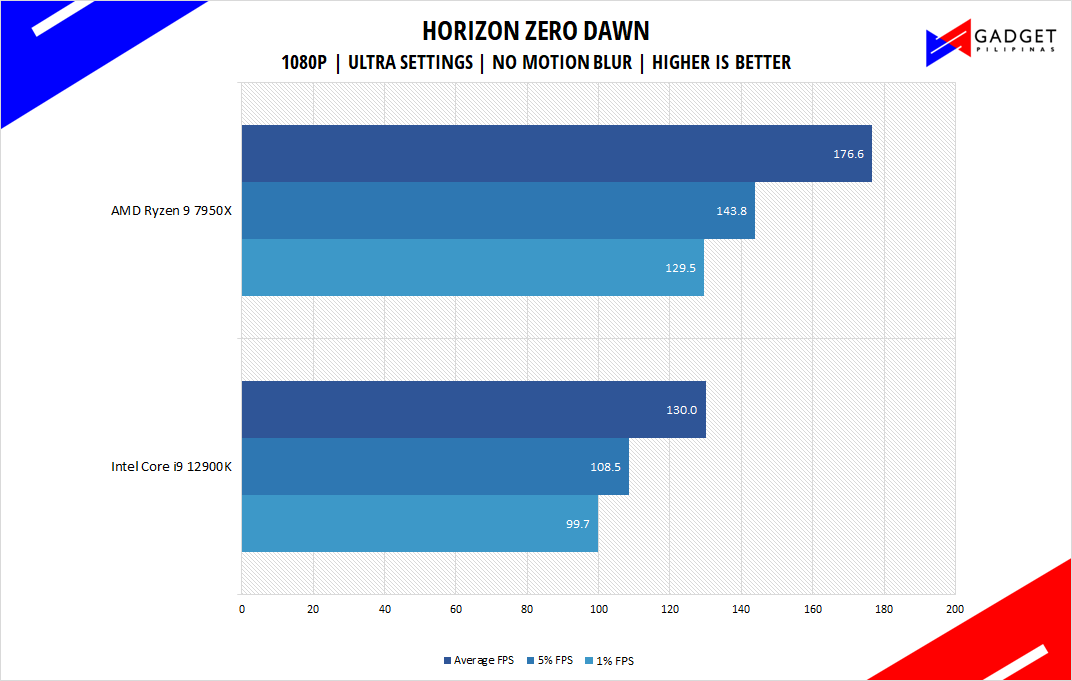
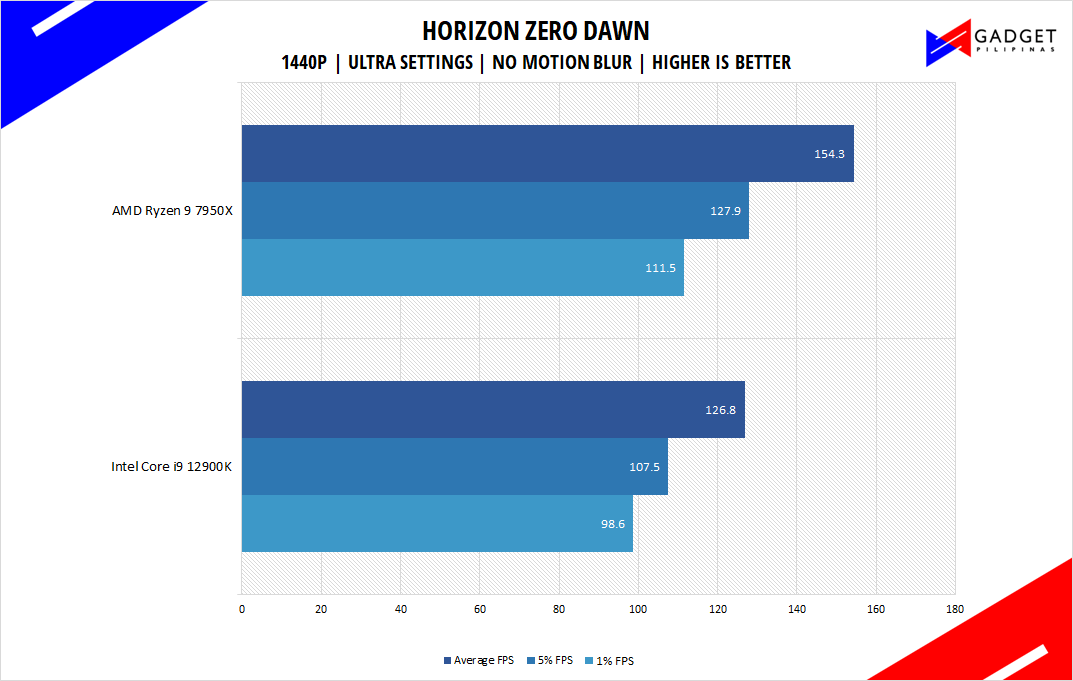
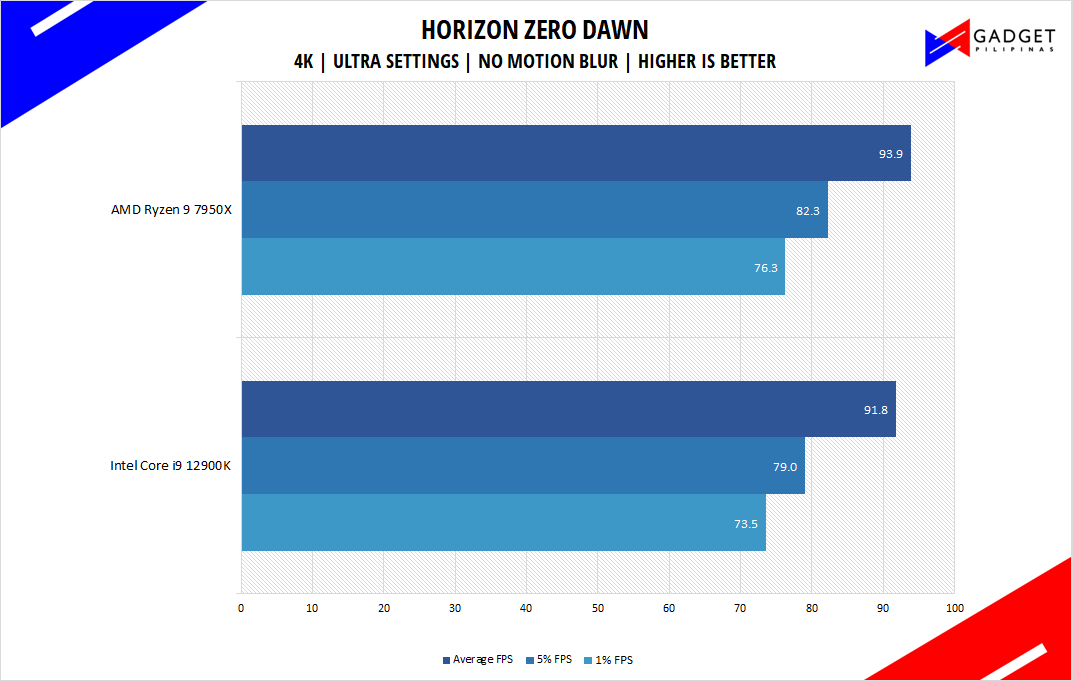
Horizon Zero Dawn is one of the most popular console-port RPG developed by Guerilla Games and published by Sony Interactive Entertainment. Horizon Zero Dawn is a multi-award-winning action RPG, and its popularity resulted in an exclusive Complete Edition game bundle on Steam.
AMD Ryzen 9 7950X Temperatures and Power Draw
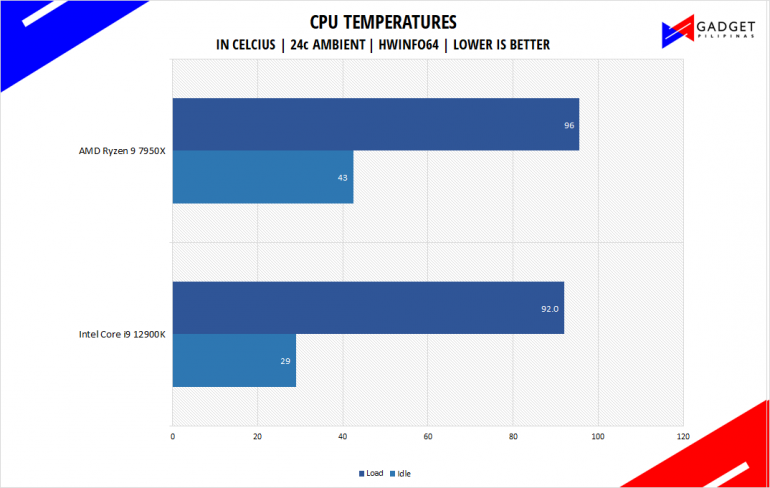
AMD designed the Zen4 cores similar to the last generation Zen3+ cores where the processor takes advantage of all thermal and power headroom available. As such, Ryzen 7000 series processors, especially the higher-end models such as the AMD Ryzen 9 7950X will frequently hit the 95°C TJMax threshold because the power management system knows that it can squeeze more performance without damaging the chip. That said, the AMD Ryzen 9 7950X is still hot mainly due to its idle temperatures at 43°C and a peak recorded temperature of 96°C considering we’re running it with a 360mm AIO. Although it’s also worth noting that AMD Ryzen 9 7950X did not have any thermal throttling issue during our benchmark run.
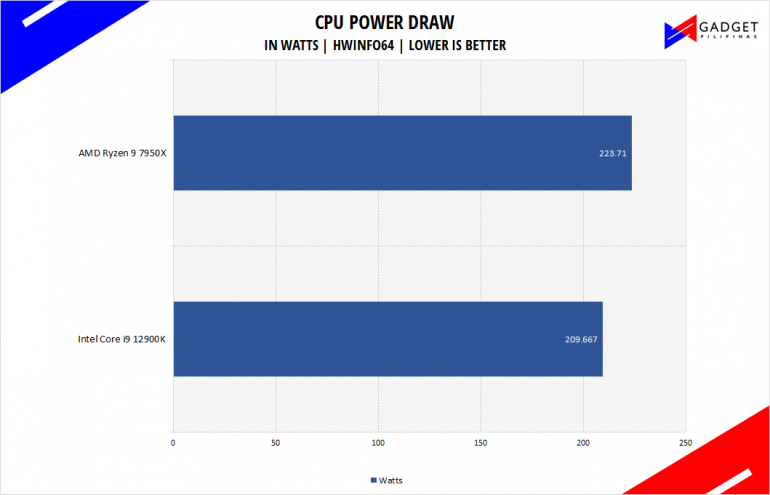
While the AMD Ryzen 9 7950X has a rated TDP of 170 watts, our peak recorded temperatures were at 223.71 watts during our benchmark run. Compared to the Intel Core i9 12900K’s 209-watt peak recorded temperature and its rated turbo of 241W, I’d say that the power consumption on the Ryzen 9 7950X is justifiable especially when you take into account its core count and 5nm lithography.
Performance Summary and Conclusion
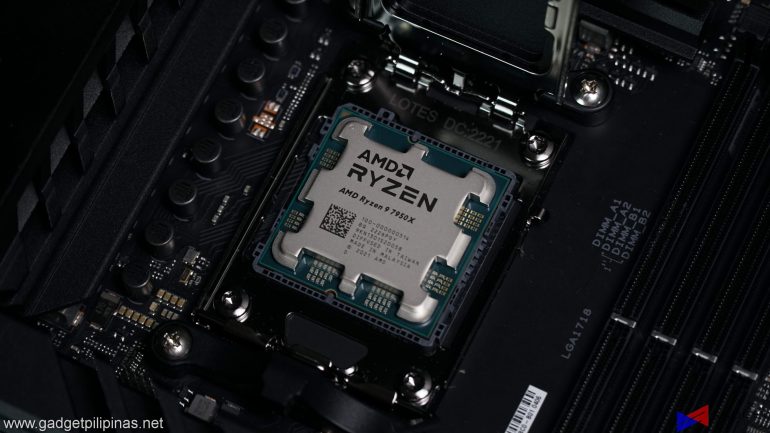
The AMD Ryzen 9 7950X outclasses the Intel Core i9 12900K in most of our productivity benchmarks by a large margin. Higher bandwidth memory seems to have played a big role as we didn’t see that much improvement on the i9 12900K when we equipped it with the 6000MHz kit coming from our 5200MHz one. The 7950X’s single-threaded performance is simply unparalleled thanks to the 5.7GHz boost clock enabled by the chip’s aggressive thermal and power management system.
Gaming tells us a rather confusing story for some as DirectX 11 games show little-to-no improvement over the 12900k. The main reason behind the numbers is that the DX11 games only use up to 8-cores per our observation leaving the rest of the 7950X’s cores and potential frames, untapped. DirectX 12 games and shooters on the other hand show the dominance of the Ryzen 9 7950X with an FPS difference of as much as 46 FPS or 30% in some titles.
What stops us from fully recommending the AMD Ryzen 9 7950X as a no-brainer purchase is its price or more specifically the cost associated with the transition to the AM5 platform. The omission of DDR4 support greatly ramps up the cost as DDR5 kits are still expensive, especially the DDR5-6000MHz kits which is the sweet spot for the Ryzen 7000 per AMD. Transitioning to Zen 4 will require at least Php 50,000 if you were to get the least expensive model, wait for a B650 motherboard, and go for lower speed DDR5 memory which is not that much of an upgrade if you’re coming from the last gen. That said, the AMD Ryzen 9 7950X takes the top spot as the best mainstream desktop processor in the market. If your workload takes advantage of multiple cores or you rely on the highest performance possible, then look no further than the flagship 7950X.
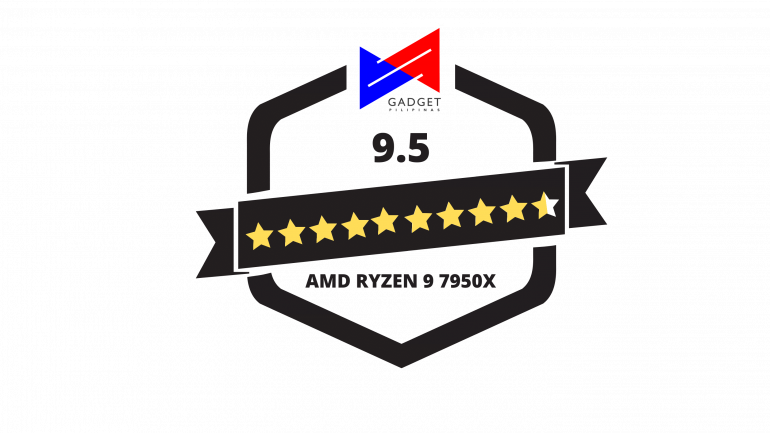
Grant is a Financial Management graduate from UST. His passion for gadgets and tech crossed him over in the industry where he could apply his knowledge as an enthusiast and in-depth analytic skills as a Finance Major. His passion allows him to earn at the same time help Gadget Pilipinas' readers in making smart, value-based decisions and purchases with his reviews and guides.

